B2C vs D2C: What’s The Difference & Which One Is For Beginners
I'm looking for...
Are you ready to navigate the shifting landscapes of consumer engagement? Dive into my latest blog article about B2C vs D2C to uncover the intricate dynamics between these two powerful business models.
Whether you’re a fledgling entrepreneur or simply curious about the trends of modern commerce, this piece offers a compelling exploration of how businesses connect with consumers.
From the networks of B2C giants like Amazon to the tailored approaches of D2C pioneers, discover which model could best serve your entrepreneurial journey.
Get ready to learn these paths and guides that will lead you to make informed decisions in the bustling marketplaces of today.
Create Your Online Store in just 5 Minutes – For Free
Pick your niche, our AI builds your store, add 10 winning products and we teach you how start selling today. Start picking your niche
Key Takeaways
- B2C Model leverages established distribution networks offering wider market reach and the benefit of established brand trust
- D2C Model focuses on personalized customer experiences and direct control over brand messaging, fostering deeper consumer loyalty
- For beginners, B2C is typically more accessible, providing lower initial barriers to market entry and the advantage of existing consumer trust
- Over 70% of B2C companies now emphasize digital marketing strategies to enhance consumer reach and efficiency
- Approximately 71% of consumers are influenced by social media in their purchasing decisions, highlighting the importance of digital engagement in both B2C and D2C models
- D2C allows companies to collect valuable customer data directly, enabling tailored marketing and product development
- D2C brands can quickly adapt to market changes and customer feedback, enhancing their ability to innovate and grow sustainably
- Large B2C entities can leverage economies of scale to offer competitive pricing and manage costs effectively
- When it comes to B2C vs D2C, B2C is better suited for businesses looking to quickly tap into a large market with established platforms, ideal for broad product appeal and competitive pricing; D2C is preferable for businesses aiming to control the customer journey, offer personalized experiences, and build direct relationships with their audience, suited for niche products and markets

What is B2C?
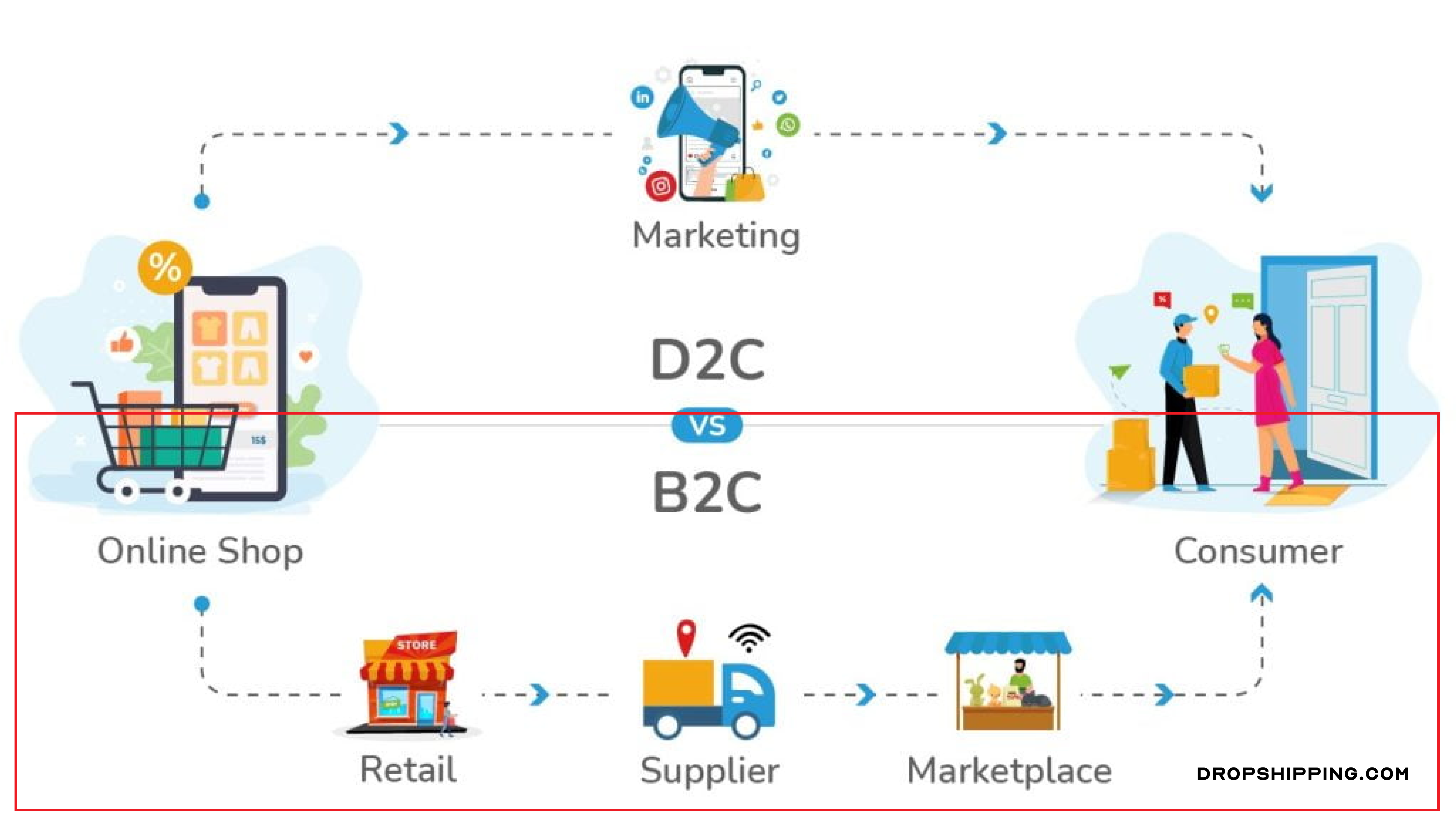
Imagine you’re walking into a bustling shopping mall or browsing through an online mega-store. This scenario, where businesses sell products or services directly to you, the consumer, gives a form of the Business-to-Consumer.
Giants like Amazon and Walmart dominate this space, offering everything from a toothpick to a tent through their extensive distribution networks.
So, as I can define it: It is a business model where products or services are sold directly to consumers, as opposed to businesses or other entities.
However, keep in mind that in B2C, businesses sell through various channels, including both third-party retailers and their own outlets. This includes online marketplaces, physical retail stores, and more.
Moreover, B2C companies not only sell things online but also in physical shops where you can actually walk in and buy stuff. This includes all sorts of shops like the ones where you buy food, clothes, gadgets, and tools.
Take Hugo Boss, for example. They make clothes that you can find in big shops like Nordstrom and Macy’s. B2C businesses can also sell their products through smaller, fancy shops that only sell certain kinds of items, like Sweetwater which sells musical stuff.
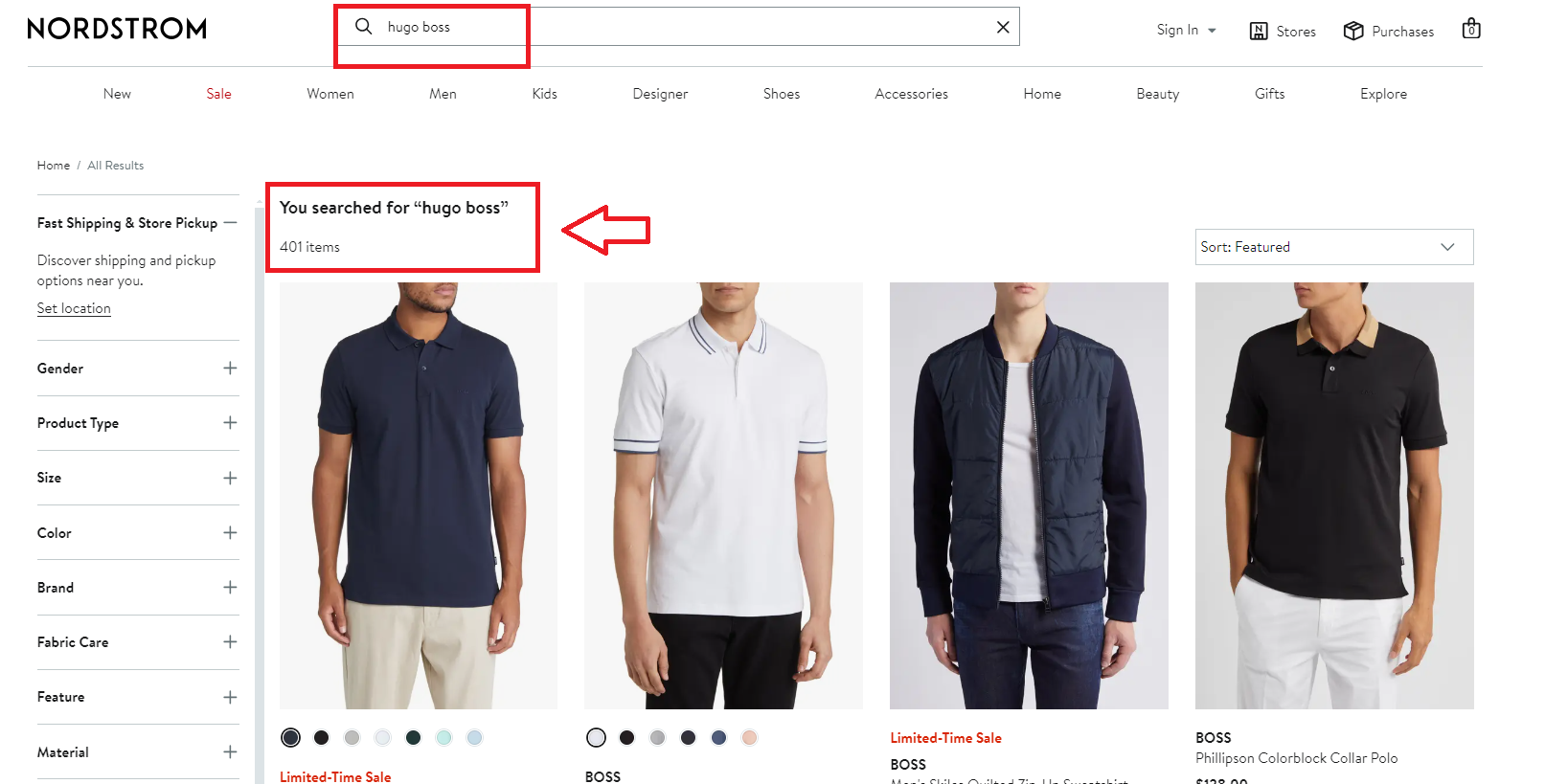
In 2025, digital strategies will be central to B2C operations. According to recent data, over 70% of B2C companies are now prioritizing digital marketing, recognizing its ability to reach consumers more efficiently.
Social media, for instance, has proven to be a powerhouse, influencing the purchasing decisions of nearly 71% of consumers worldwide.
How Does B2C Work?
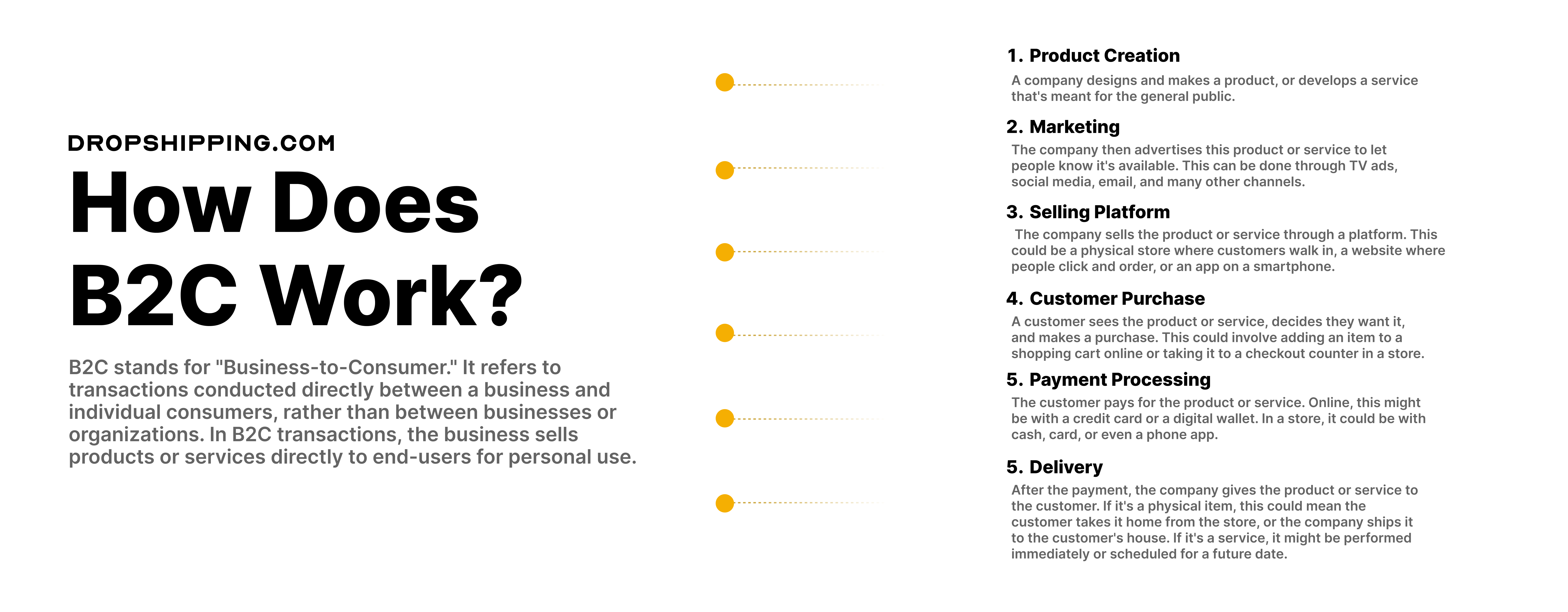
B2C, which stands for Business-to-Consumer, is pretty straightforward. It’s how businesses sell products or services directly to people like you and me.
When a company makes something, like a phone, or a pair of sneakers, or offers a service, like streaming movies or fixing cars, and they sell it right to the person who’s going to use it, that’s B2C.
Imagine you go into a store or hop online to buy a new laptop. The store or website is set up by the company that either makes the laptop or buys it from the maker to sell to customers. When you hand over your money and take home the laptop, that’s a B2C transaction.
It’s different from when a business sells stuff to another business, like when a laptop maker sells a bunch of laptops to a store before the store sells them to people. That’s called B2B, or Business-to-Business.
In B2C, the last step is always the sale to the end-user, the consumer, without any extra businesses in between.

B2C Types Of Online Sellers
Direct Sellers
This is the most typical way people shop online. Customers buy products directly from online stores.
These stores could be manufacturers selling their own products, small businesses, or big online department stores that offer items from various brands.
For example, Amazon and Walmart operate as direct sellers where you can buy a wide range of products directly.
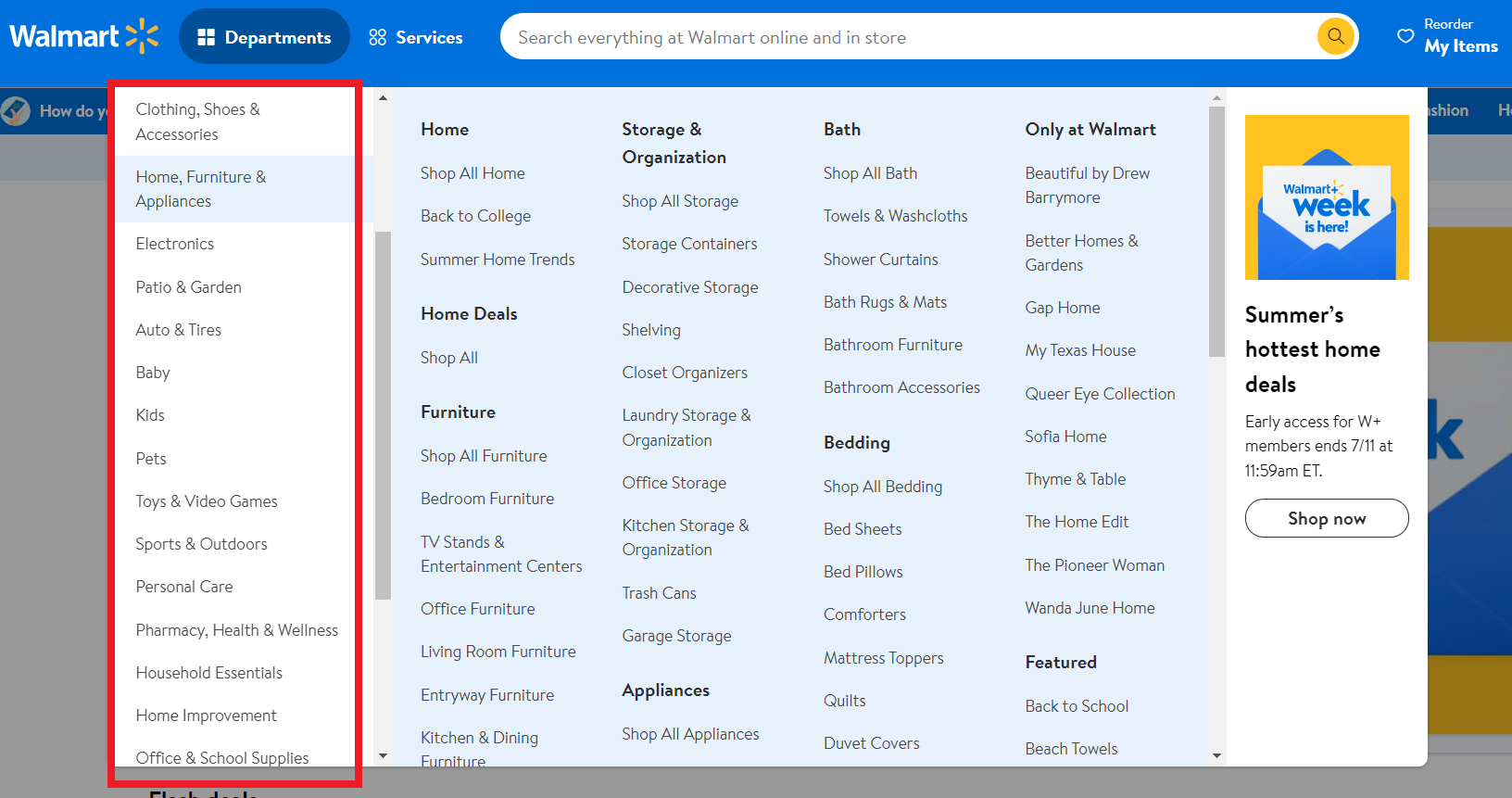
Online Intermediaries
These platforms act as middlemen; they don’t own the products or services they list. Instead, they connect buyers with sellers.
Travel booking sites like Expedia and Trivago, or marketplaces for handmade goods like Etsy, are good examples of online intermediaries.
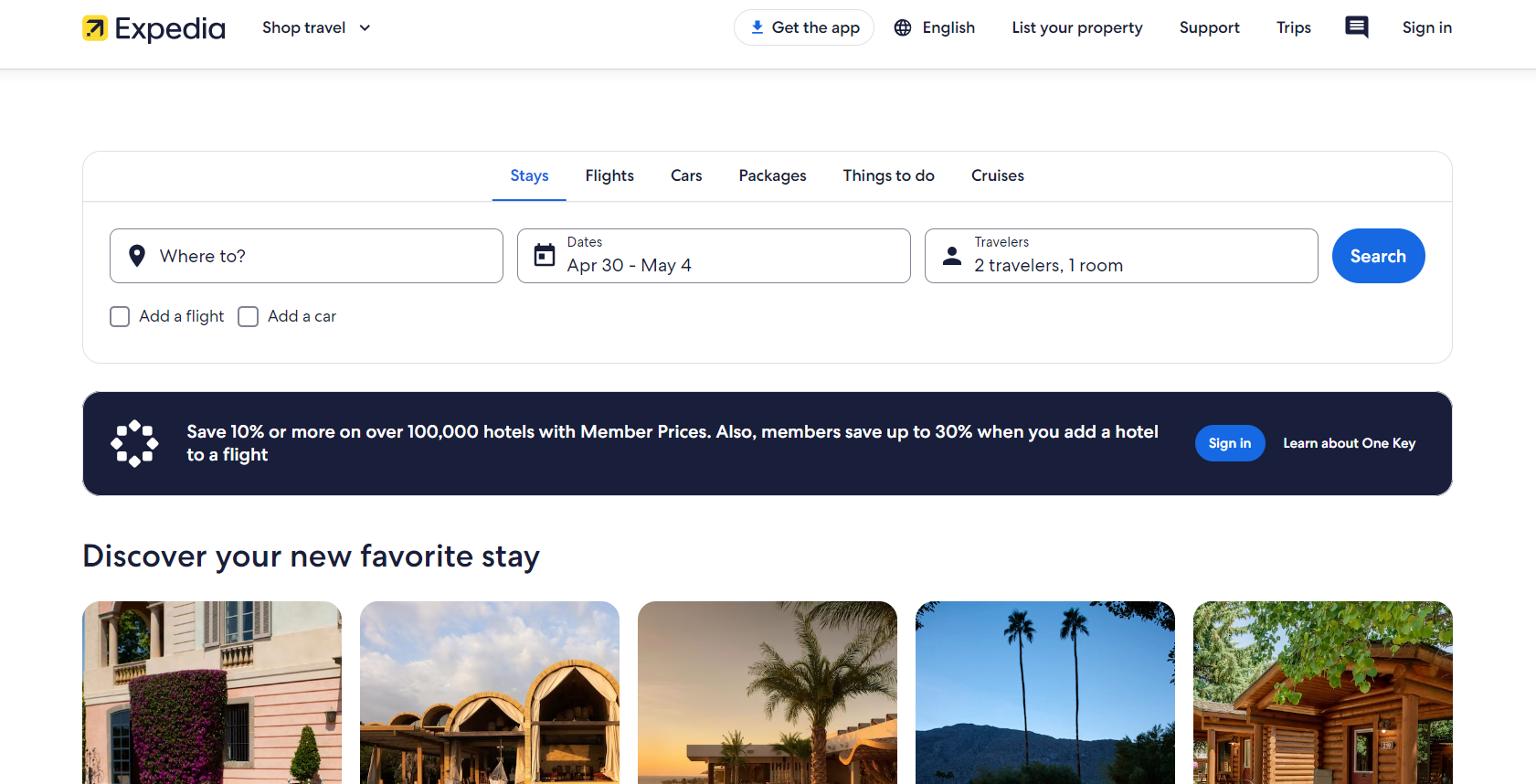
Advertising-based
In this model, companies attract visitors with free content and then expose them to ads. The more people visit, the more valuable the ad space becomes.
For instnace, media sites like HuffPost use this model effectively, blending news and entertainment with advertising.

Community-based
Platforms like Meta (formerly Facebook), which create online communities around shared interests, fall into this category. So, when it comes to B2C vs D2C, this is totally B2C.
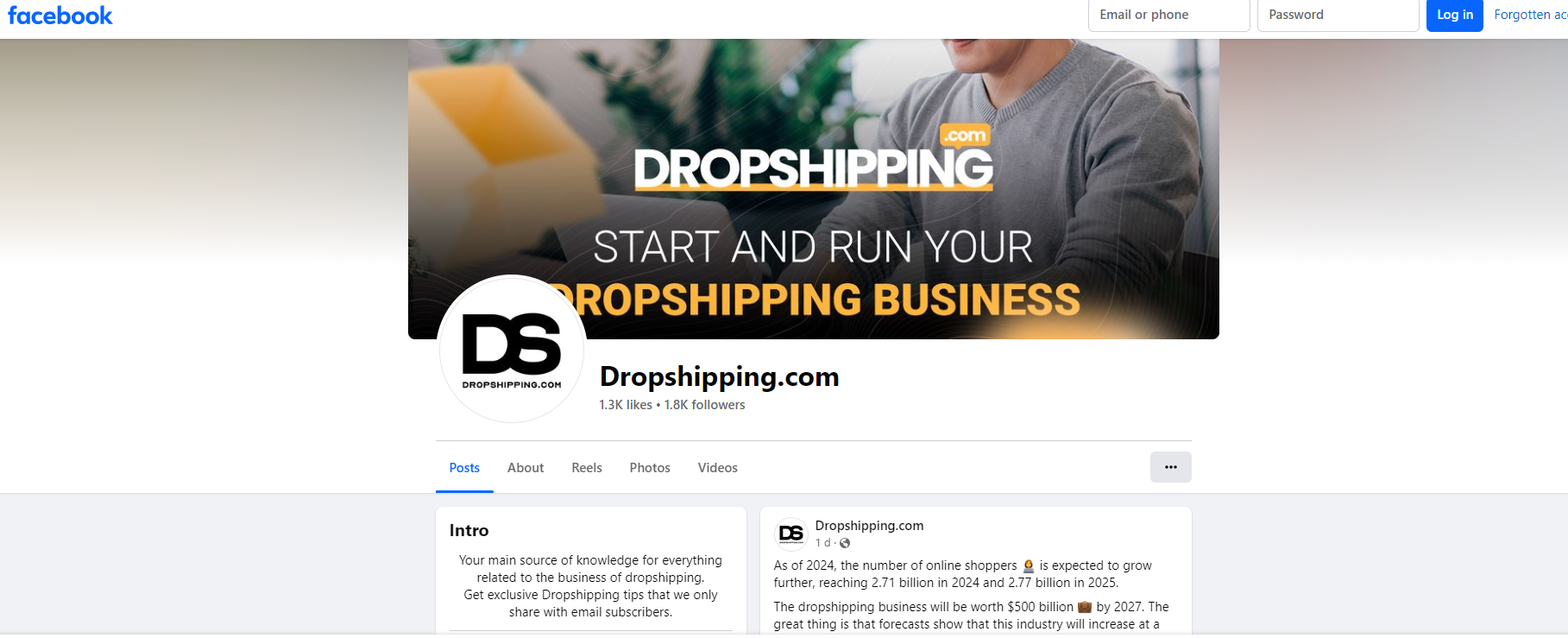
They offer a targeted way for marketers to promote products directly to specific groups of users, using data like age, interests, and location to show relevant ads.
Fee-based
Some sites charge users a fee to access premium content. Netflix, for example, requires a subscription fee for unlimited access to its content library.
Similarly, The New York Times offers some articles for free but requires a subscription to access their full range of content.
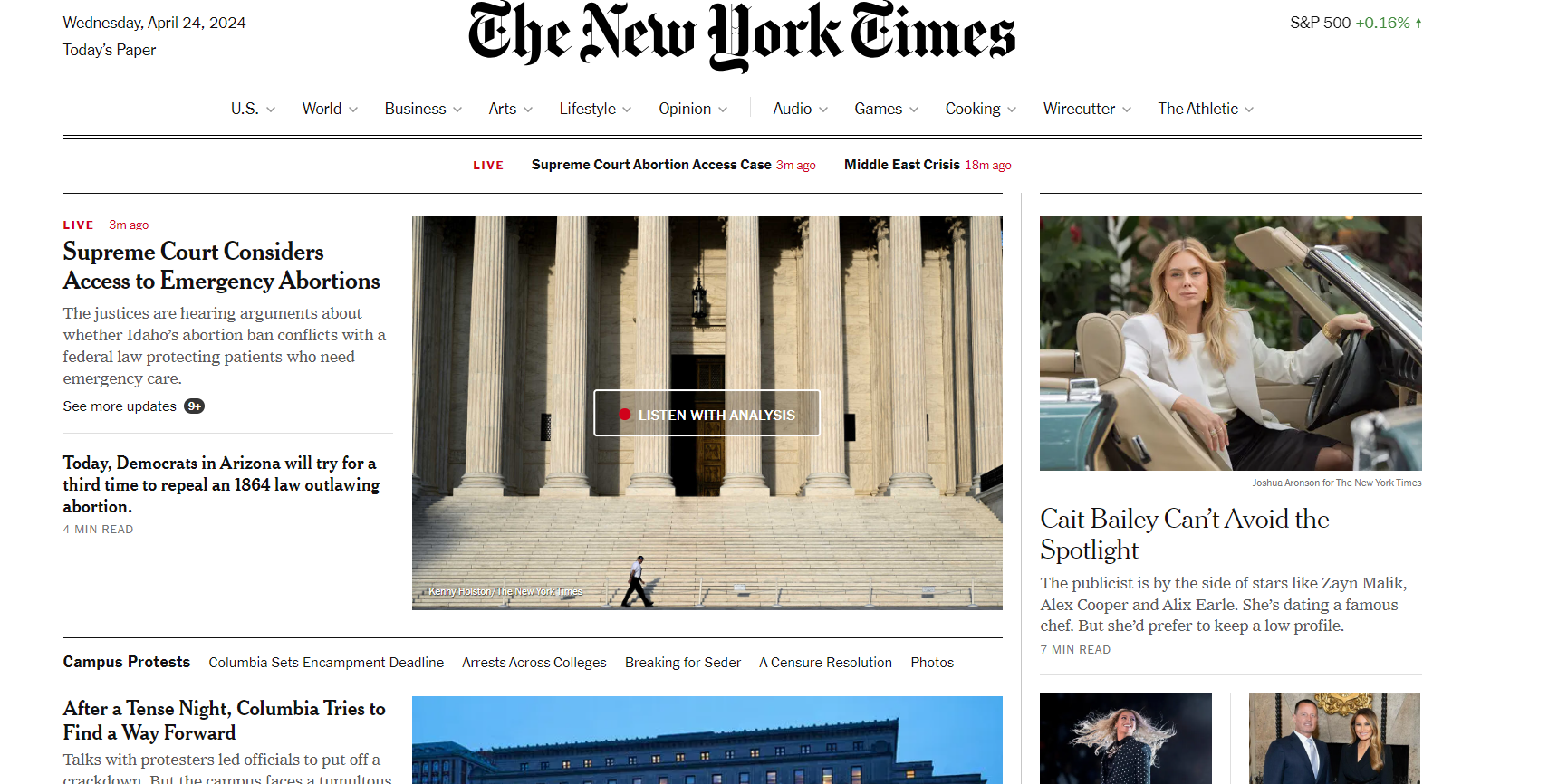
What is D2C?
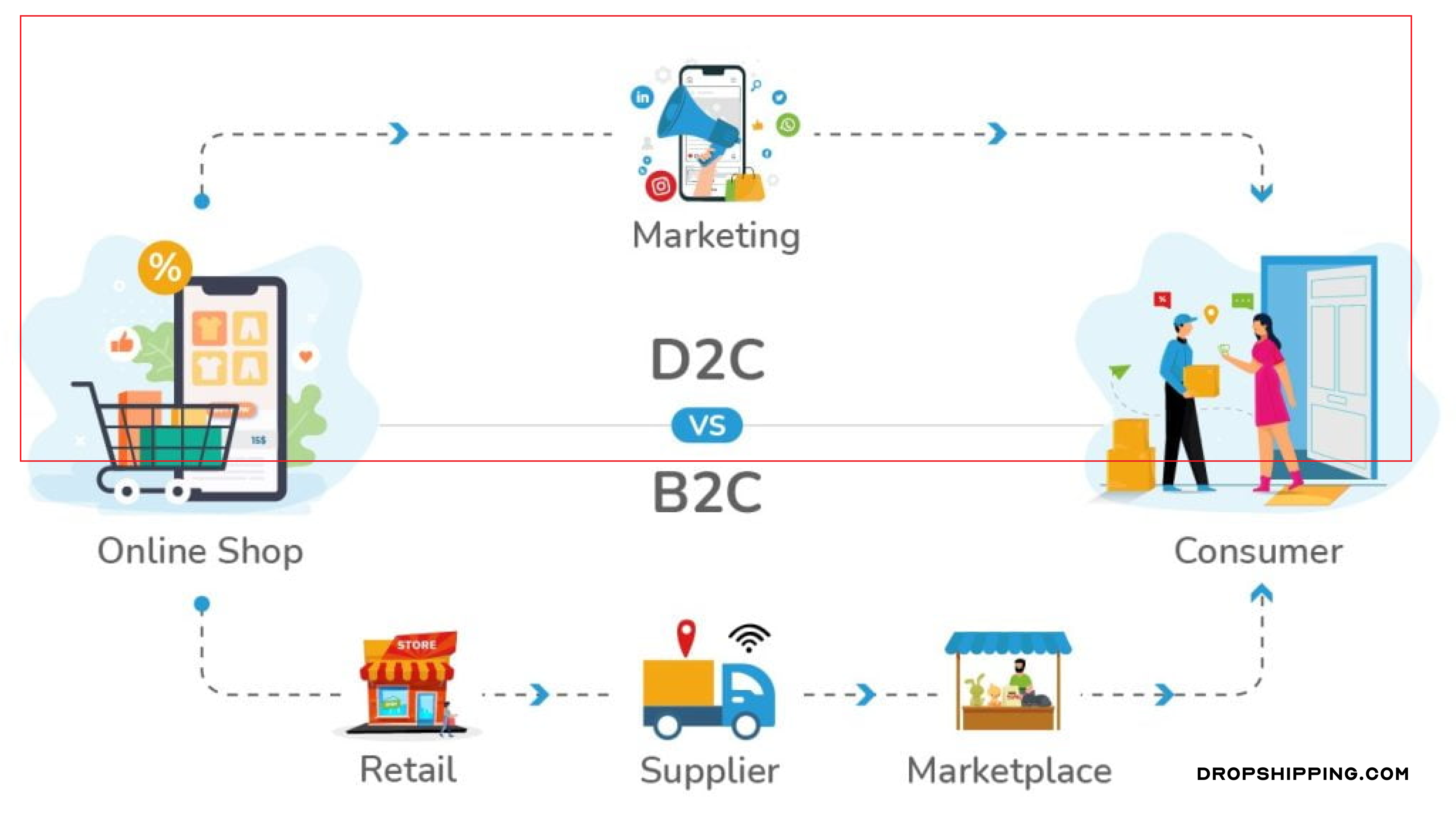
The D2C, or Direct-to-Consumer, model is pretty much what it sounds like. Hence, companies make stuff and sell it straight to people without any middleman. They send the products directly to whoever buys them.
With that said, D2C is a business model where manufacturers or brand owners sell their products directly to consumers, bypassing traditional intermediaries such as wholesalers, distributors, and retailers.
Also, often they are using cool tools that help get the stuff from the factory to your front door.
Businesses with a D2C model use their own ways to sell, like their own shops, websites, or even other stores. However, they still take care of the shipping part themselves. This isn’t something new.
For example, brands like Warby Parker, selling eyewear, or Casper, dealing in mattresses, are poster children for this model. They deliver customized experiences straight from their factory floors to your front door.
How Does D2C Work?
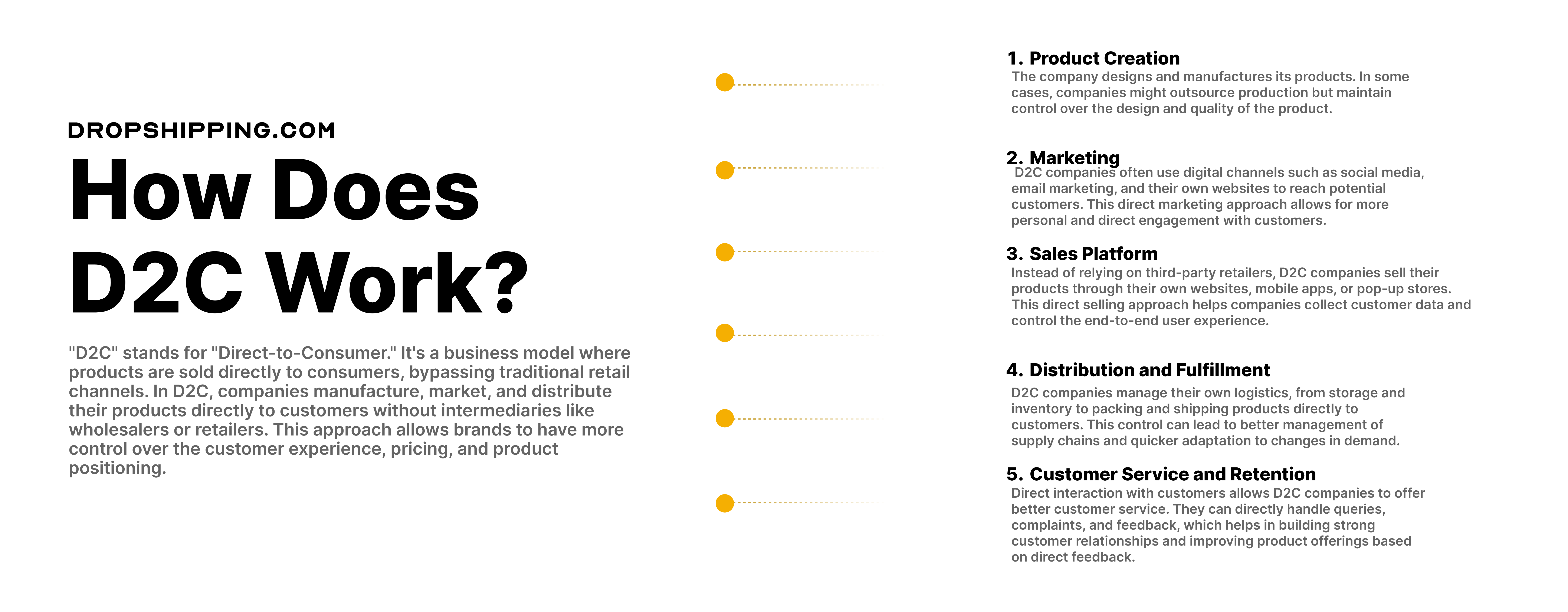
Direct-to-Consumer (D2C) is a business model where companies sell products directly to customers. It eliminates traditional intermediaries such as retailers and wholesalers. ‘=
This model has become increasingly popular due to the rise of e-commerce and digital marketing technologies. In the D2C approach, companies first design and manufacture their products.
Thus, often maintaining tight control over design and quality even if production is outsourced.
Also, instead of distributing through third-party retailers, D2C companies use their own sales platforms such as websites, mobile apps, or pop-up stores.
This not only helps in collecting valuable customer data. Also, it ensures that the company maintains control over the customer experience from start to finish.
Logistics, including storage, inventory management, packing, and shipping, are managed in-house. This direct control over distribution and fulfillment allows for better supply chain management.
Plus, it helps the ability to quickly adapt to changes in demand or customer preferences.
Finally, D2C companies handle their own customer service and retention, which enables them to offer superior customer support and build strong relationships.
Difference Between B2C and D2C
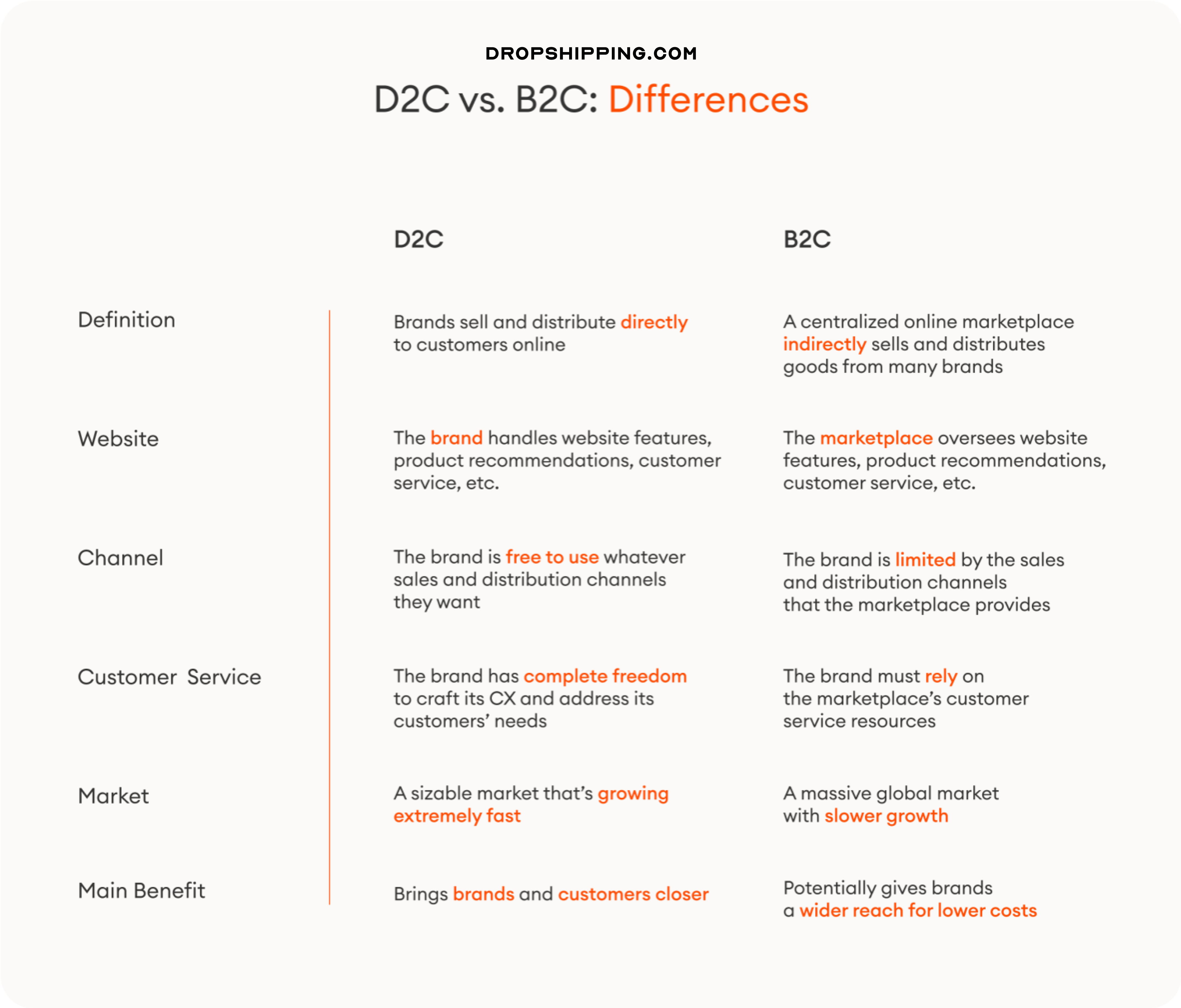
B2C vs D2C: Sales Channel Management
In a B2C setup, your products are listed on centralized online marketplaces that handle everything from product listings to customer service.
In B2C, businesses sell through various channels, including both third-party retailers and their own outlets. This includes online marketplaces, physical retail stores, and more.
This arrangement means the marketplace is the face of your product to the consumer. Conversely, the D2C model cuts out these middlemen, allowing you direct access to your customers through your own online platforms.
So, this means that D2C brands sell directly to consumers without involving any third-party retailers or distributors. So, sales are conducted primarily through the company’s own platforms, such as their website or branded physical stores.
Therefore, if you see a product being sold through various retailers, both online and in physical stores, it’s typically a B2C company. If it’s primarily available from the manufacturer’s own website or store, it’s likely D2C.
This direct control can enhance your ability to manage the sales experience and innovate quickly based on customer feedback.
B2C vs D2C: Distribution and Intermediaries
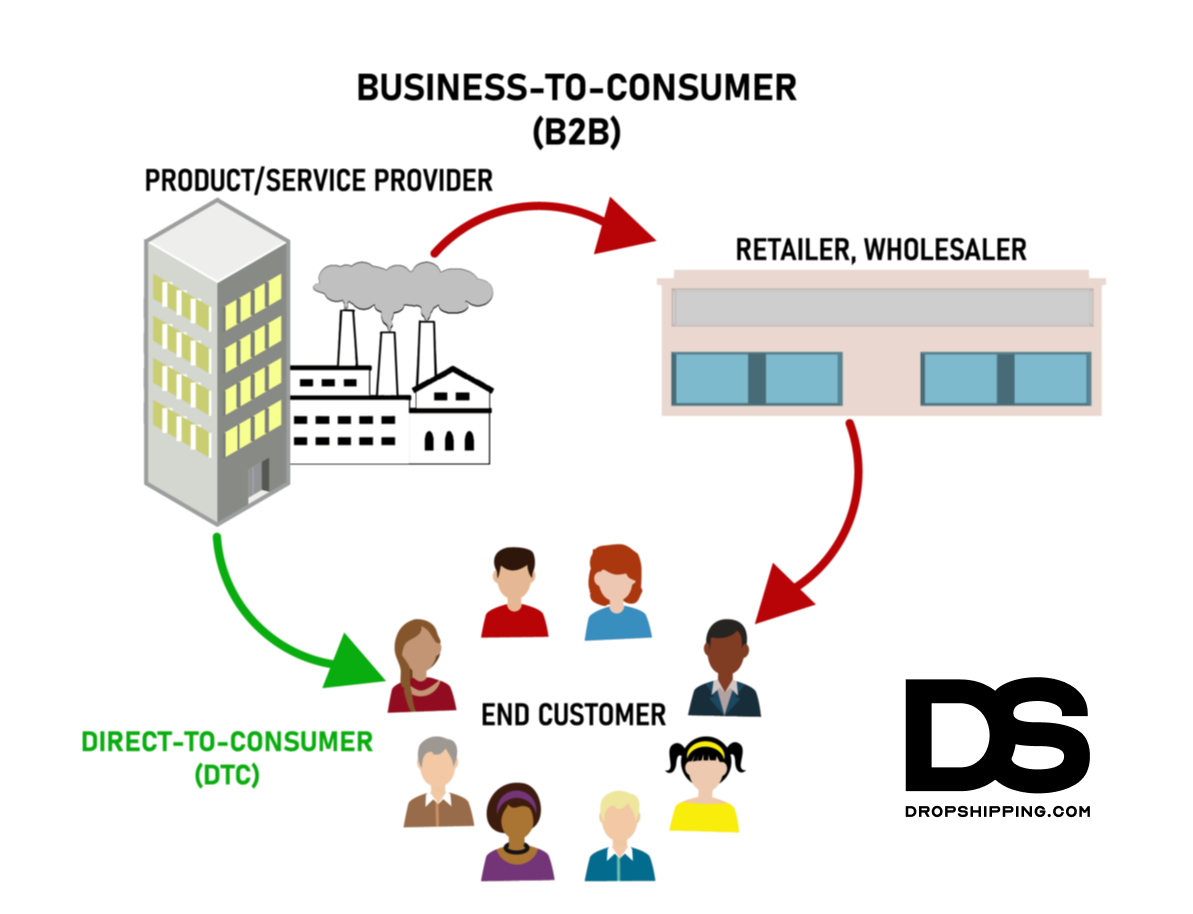
The traditional B2C model involves multiple intermediaries from production to sale. This can dilute your control over your product and reduce margins.
In fact, there can be several intermediaries involved, such as distributors, wholesalers, and retailers, before the product reaches the consumer.
On the other hand, D2C eliminates these intermediaries. This not only simplifies the distribution chain but also increases your margins and improves direct communication with your customer base.
B2C vs D2C: Customer Experience and Engagement
B2C’s approach, though broad-reaching, often places a barrier between you and your customers due to the involvement of third-party sellers. This can limit your ability to understand and respond to customer needs directly.
In contrast, D2C offers a direct line to your customers. Thus, this enables a tailored and often more satisfying shopping experience. Moreover, it can lead to higher brand loyalty and customer retention.
So, D2C brands often have highly targeted, personalized marketing campaigns and tend to engage directly with consumers via social media and email marketing. B2C might use broader, less personalized advertising strategies.

B2C vs D2C: Market Reach vs Market Growth
While B2C models benefit from the vast reach of established distributors and retailers, D2C models often focus on building deeper relationships with a smaller customer base to drive growth.
This direct interaction facilitates a faster adaptation to market changes and customer preferences, potentially leading to more sustainable growth over time.

B2C vs D2C: Brand Control and Strategic Freedom
The control over brand messaging and customer interactions is significantly higher in D2C models.
This control allows for a more authentic brand experience. Also, it has the ability to quickly implement strategic changes based on real-time market data and feedback.
In B2C, however, brands must often conform to the platforms’ rules and policies. This can restrict strategic freedom and dilute the brand’s unique voice.
Pros & Cons Of B2C
Pros of B2C
 Wider Market Reach
Wider Market Reach
B2C companies can access a vast customer base. This allows them to sell products and services across national and international markets through online platforms.
Also, this broad reach helps in diversifying customer segments and reduces dependency on local markets.
Amazon reaches millions of customers globally with its extensive distribution network. It offers everything from books to electronics, which showcases the power of having a wide market reach.
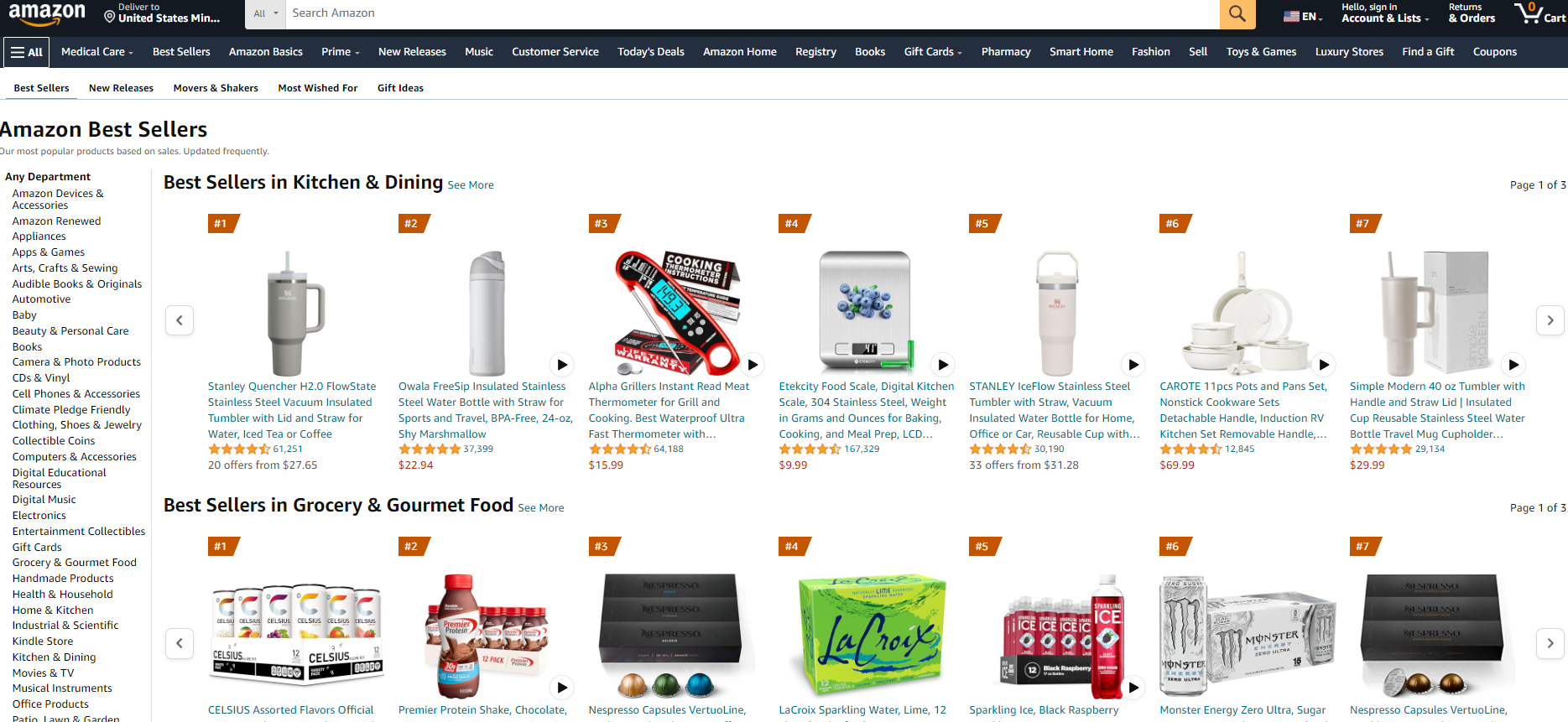
 Economies of Scale
Economies of Scale
Explanation: Larger B2C companies benefit from economies of scale, which reduce the per-unit cost of products as production volume increases.
This allows these companies to offer competitive pricing and manage operational costs more efficiently.
For instance, Walmart uses its buying power to purchase goods in large quantities at discounted rates. Hence, it passes on to customers at lower prices, outcompeting smaller retailers.
 Customer Convenience
Customer Convenience
B2C models focus on making the shopping experience as convenient as possible, offering features like one-click ordering, quick delivery, and easy returns. This enhances customer satisfaction and encourages repeat business.
For example, I love Netflix. In fact I don’t know what I would do without it. Well, this platform represents the B2C model very well.

Netflix provides an easy-to-use streaming service. Customers can watch a wide array of shows and movies on demand. So, this eliminates the need to visit a physical store or wait for scheduled broadcast times.
 Established Brand Trust
Established Brand Trust
Well-known B2C brands often benefit from established trust and recognition, which can drive consumer preference and loyalty. Brand strength is particularly valuable in crowded markets where consumers face many choices.
For example, Nike has built a strong brand associated with quality and innovation in athletic apparel and footwear. It encourages consumers to choose Nike over lesser-known brands.
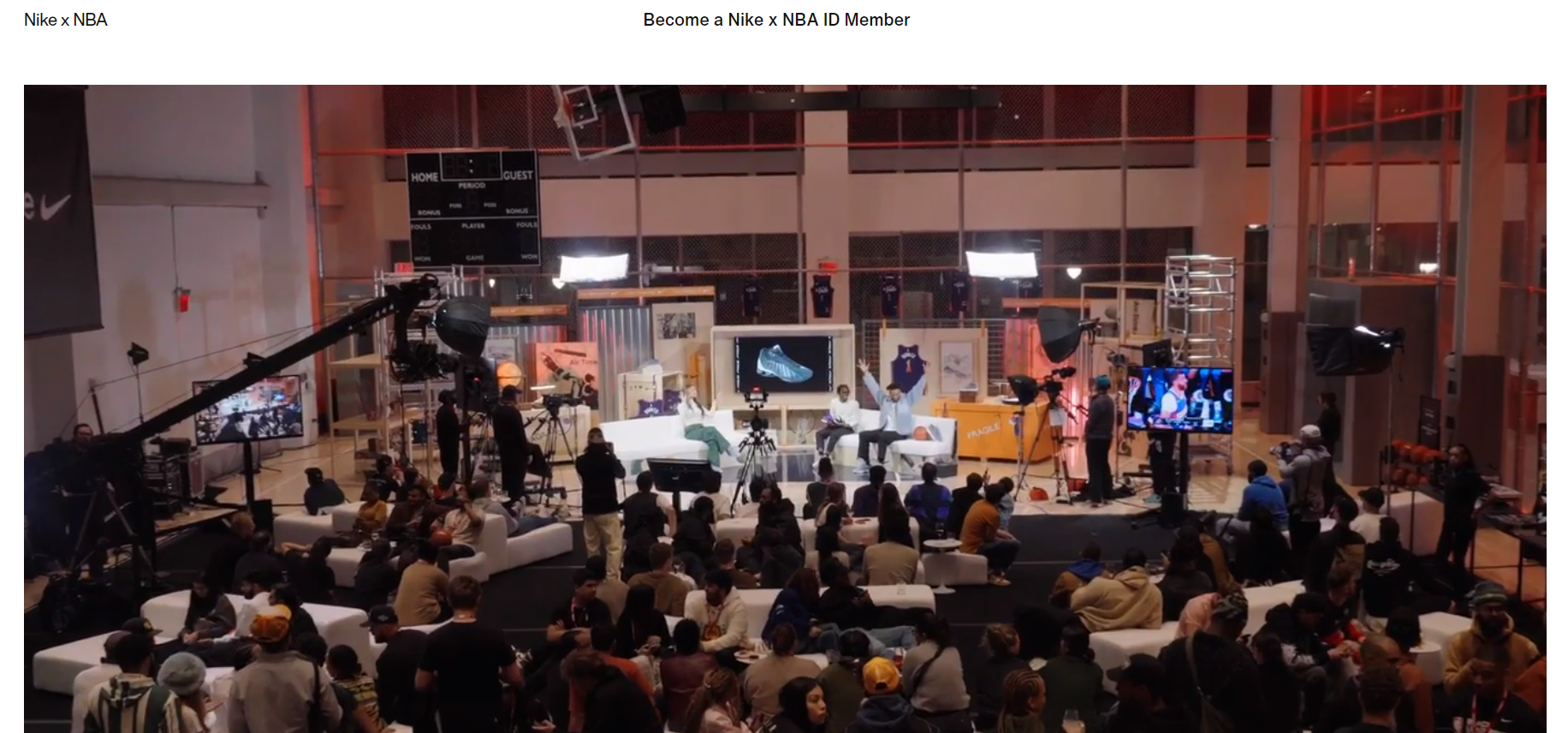
Cons of B2C
 High Competition
High Competition
When it comes to B2C vs D2C, this is issue for both.
The B2C marketplace is highly competitive, with many firms vying for consumer attention and dollars.
So, companies must continuously innovate and market their products effectively to maintain or grow their market share.
For instance, electronics retailers like Best Buy face intense competition from online retailers and other brick-and-mortar stores, requiring constant innovation in their product offerings and customer service.
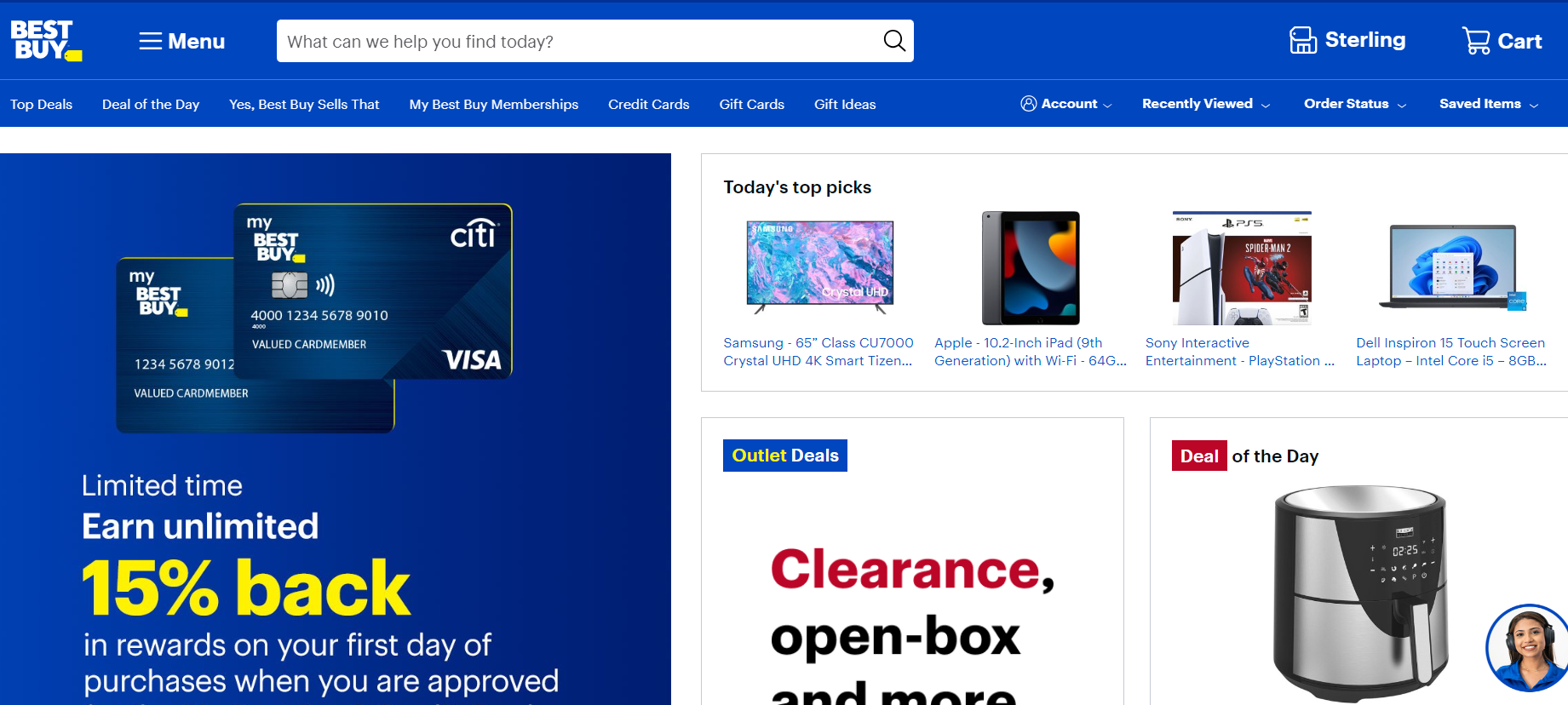
 Customer Service Challenges
Customer Service Challenges
Managing customer service in a large-scale B2C environment can be challenging.
Thus, high customer volumes can lead to impersonal service and inconsistencies, which may negatively impact customer satisfaction and loyalty.
 Reliance on Third-Party Platforms
Reliance on Third-Party Platforms
Many B2C companies depend on third-party platforms for sales, advertising, and customer engagement. Changes in platform policies or costs can significantly affect their business operations and profitability.
For instance, small businesses using Facebook to reach customers are at the mercy of Facebook’s changing algorithms and advertising costs, which can influence their visibility and marketing expenses.
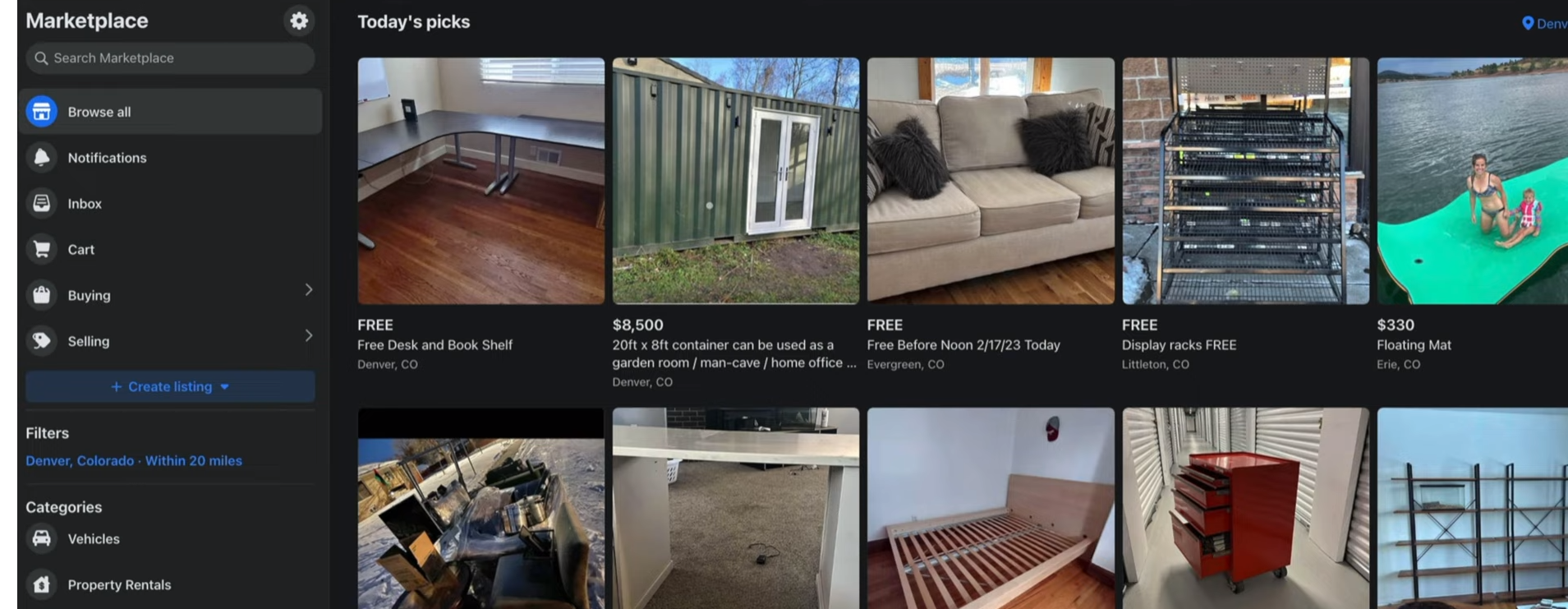
 Logistical Complexity
Logistical Complexity
Operating a B2C business, especially one that handles physical products, involves complex logistics.
This includes managing inventory, distribution, and fulfillment operations across multiple locations, often leading to increased costs and coordination challenges.
Pros & Cons of D2C
Pros Of D2C
 Personalized Customer Experiences
Personalized Customer Experiences
Unlike traditional B2C models where customer data often remains with intermediaries, D2C allows brands to harness detailed customer insights, enabling highly personalized interactions.
This capability extends to customized website experiences that can foster strong emotional connections and enhance brand loyalty.
For instance, Revelry leverages customer-shared photos on its D2C platform to assist others in visualizing products. With this, it enriches the shopping experience and offers valuable feedback.
Also, Stitch Fix, an online personal styling service, utilizes data analytics to tailor clothing selections to individual customer preferences, sizes, and style feedback, resulting in highly personalized shopping experiences.
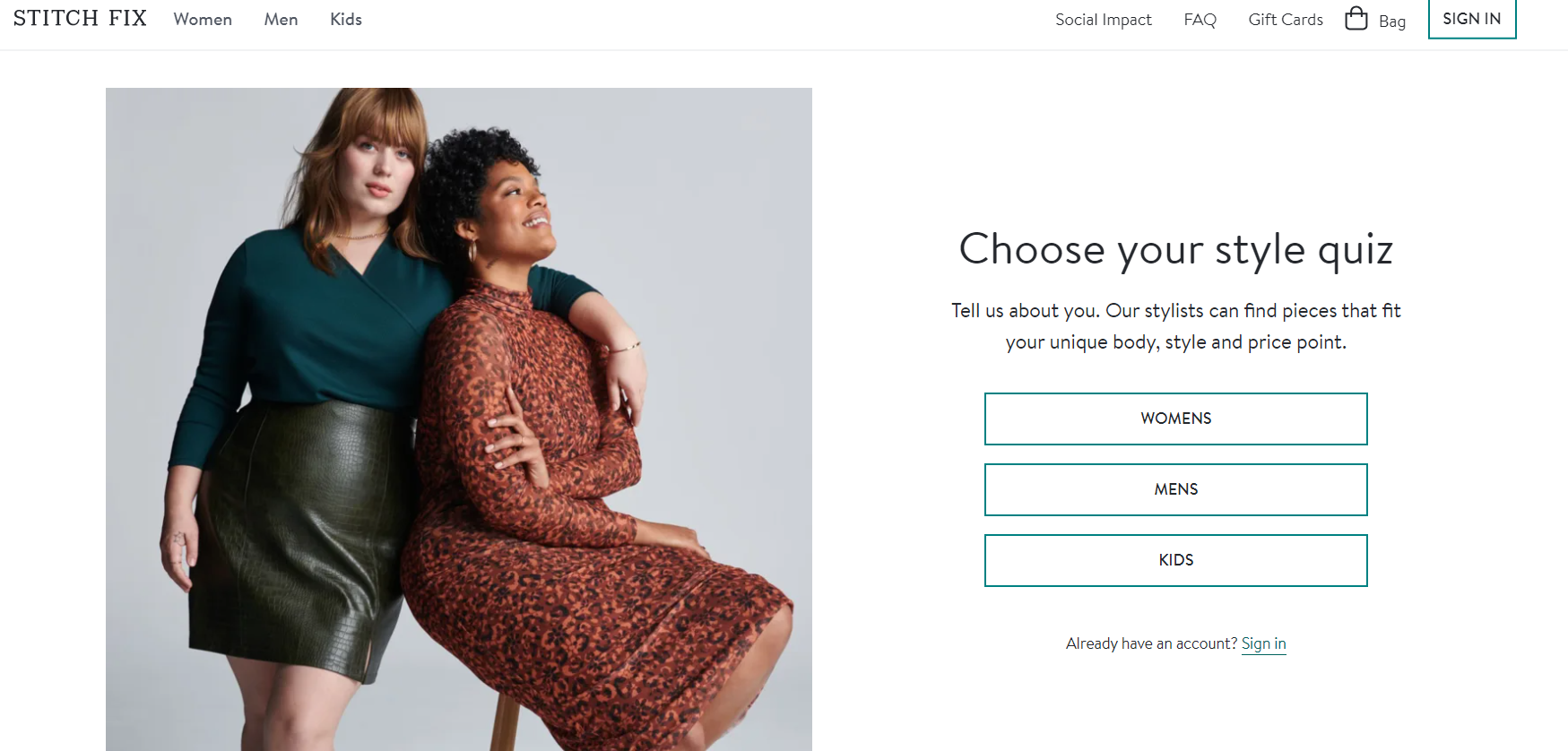
 Enhanced Customer Engagement
Enhanced Customer Engagement
Well, compared to B2C vs D2C, D2C brands typically exhibit a higher level of customer engagement compared to traditional retail stores.
This engagement often stems from a community-focused approach. For example, Glossier promotes content from actual customers rather than influencers, enhancing authenticity and leveraging its direct relationship for marketing purposes.
Similarly, Peloton incorporates gamification and community features to maintain user engagement, offering a competitive yet immersive fitness experience.
Also, Warby Parker, a D2C eyewear brand, engages customers through a home try-on program. So, users can select multiple frames to try at home for free.
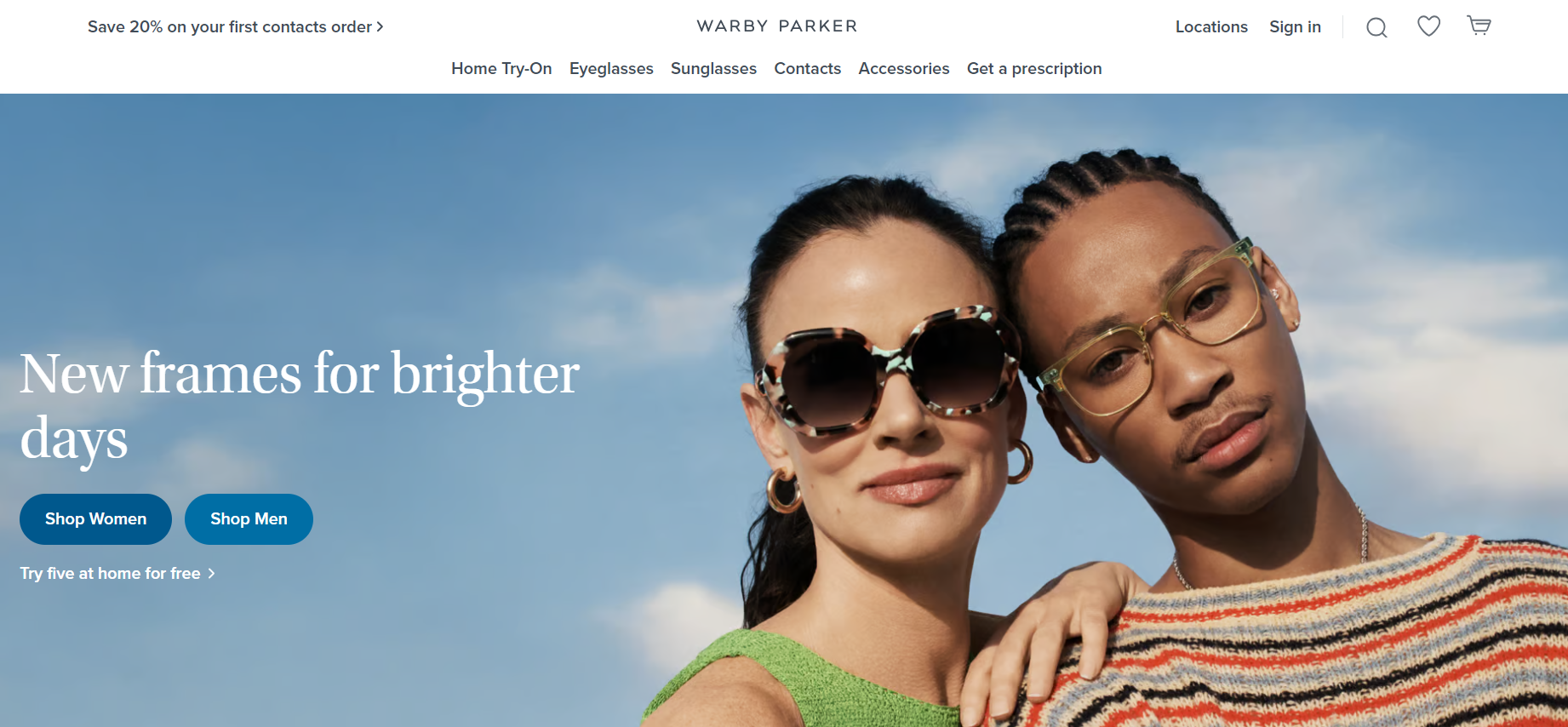
This program not only enhances the buying experience but also builds a community around the brand through shared experiences and feedback.
 Control Over Sales and Marketing:
Control Over Sales and Marketing:
Direct control allows D2C brands to optimize customer satisfaction more effectively.
For example, Bonobos is renowned for its exceptional customer service, characterized by rapid response times and efficient problem-solving.
Likewise, Hyphen Sleep offers flexible exchange policies and free shipping, standards that are increasingly common among D2C brands.
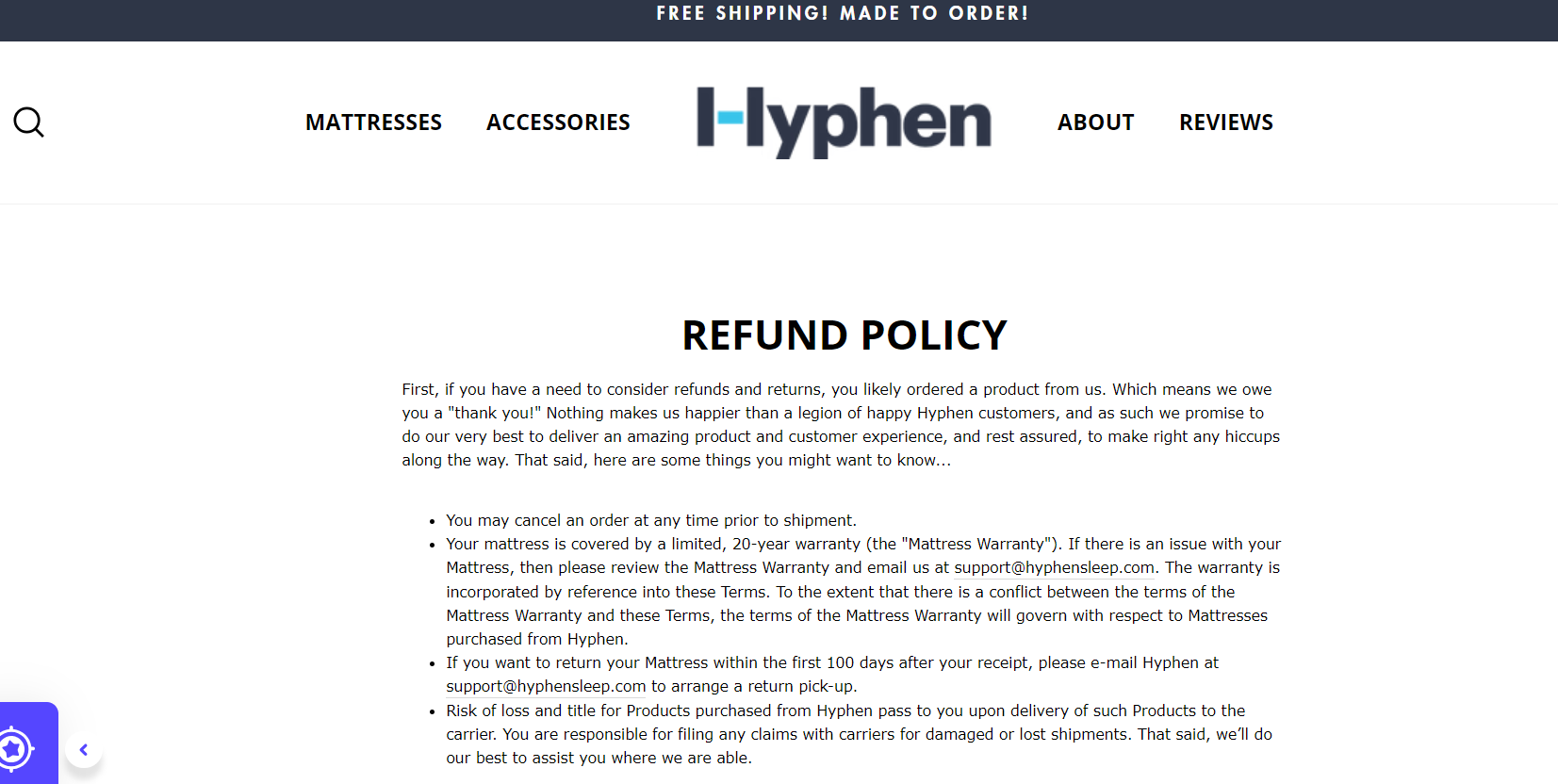
 Improved Profit Margins
Improved Profit Margins
Operating a D2C model eliminates the need to share profits with resellers or marketplaces, providing greater profit margins and potentially lower prices for consumers.
This control also extends to managing overhead costs through direct monitoring of websites and social media.
Cons of D2C Ecommerce
 Increased Liability
Increased Liability
With the producer handling marketing, sales, and distribution, all associated liabilities also rest on their shoulders. This includes risks such as cybersecurity breaches, complex logistics, and handling sensitive customer data.
Without the cushion of a marketplace’s support system, any surge in customer demand can overwhelm a D2C brand’s capacity to respond effectively, making automation tools crucial for customer service.
For instance, Blue Apron, a meal kit company, has faced challenges with logistical complexities, including managing perishable goods and delivery schedules.
These operational challenges are compounded by the responsibilities of handling all aspects of customer interaction directly.
 Rising Competition
Rising Competition
The D2C sector is expanding rapidly, heightening competition. Standing out in a crowded market requires more than just a good product.
Hence, it demands exceptional customer service and a vibrant community.
For instance, I will share with you one pitfall when it comes to D2C competition issues.
Casper, a pioneer in the online mattress industry, initially stood out in the D2C space. However, as the market became saturated with similar startups and larger brands moving into the D2C space.
Casper faced intense competition, impacting its ability to sustain its initial growth momentum.
B2C vs D2C: Which Model Is Better For Your Business?
When you’re deciding whether a B2C (Business-to-Consumer) or D2C (Direct-to-Consumer) model is the best fit for your business, it really boils down to what you’re selling and how you want to connect with your customers. So, let’s break it down simply.
For B2C businesses, these are usually products that appeal to a broad audience. If your strategy revolves around competitive pricing and reaching as many people as possible, this model might be right for you.
In 2025, the B2C market revenue is projected to hit around $7.76 trillion globally, highlighting the massive potential in this space.
On the other hand, D2C businesses are more about creating a unique experience for your customers.
This model suits you if you’re focusing on niche products. Also, if you want to control every interaction with your customer to ensure it’s special. The D2C market is also booming, with an expected revenue of $4,507.70 billion in 2025.
Now, think about the level of control you want over your customer experience. So, in my opinion, if you’re looking to manage every detail of the customer journey, D2C gives you that closeness and personalization.
However, if you’re okay with others handling logistics and fulfillment while you focus on product development and sales, B2C might be the way to go.
Lastly, consider your marketing and branding strategy. If you already have a well-known brand and you can benefit from the established networks of big retailers, B2C can help amplify your reach.
But if you’re starting fresh and aiming to build a strong, direct connection with your audience, D2C allows you to craft your brand’s story from scratch and resonate deeply with your customers.
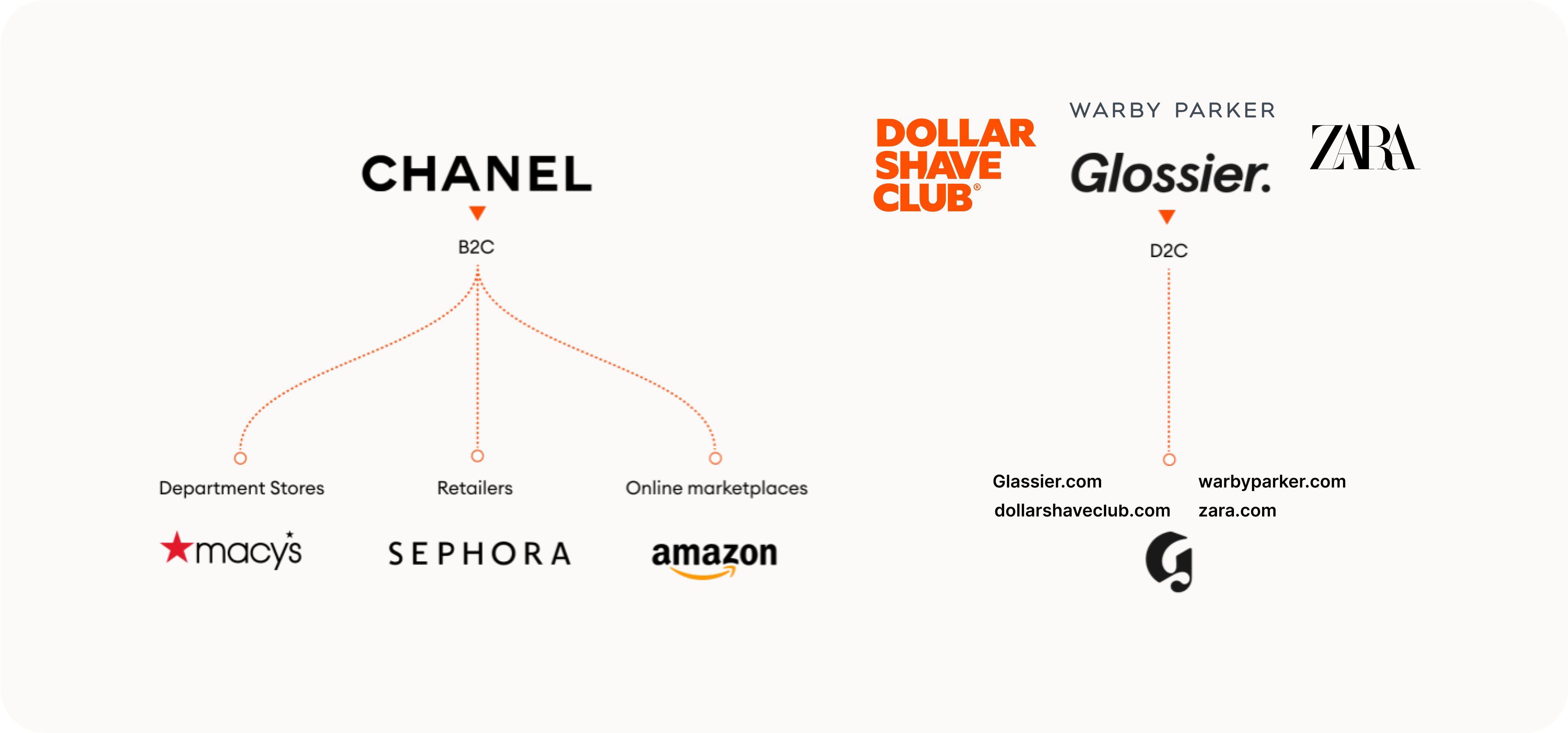
Real-Life Examples Of B2C
Apple

Apple shines as a paragon of the B2C business model, harnessing the power of consumer electronics, software, and online services to captivate a global audience. Renowned for its innovative products like the iPhone, iPad, and Mac,
Apple’s strategy revolves around offering premium products through its stylish retail stores, online platforms, and a selection of third-party distributors.
This contrasts sharply with the D2C model, as Apple focuses heavily on brand experience and customer service to foster deep brand loyalty.
The company’s consistent innovation and integrated product ecosystem have become a hallmark of its enduring success.
Nike
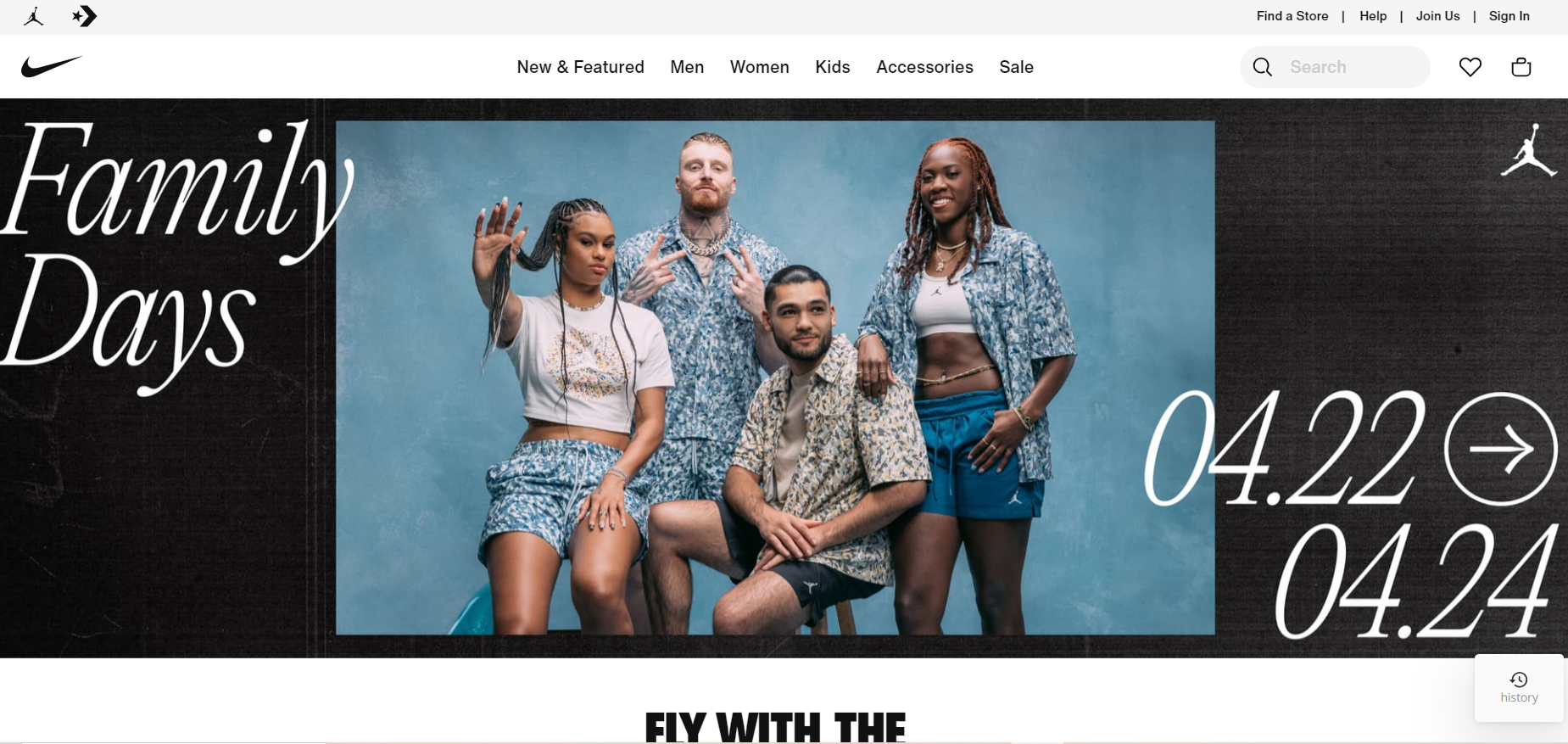
Transitioning to the world of sports, Nike has successfully translated its emphasis on quality and innovation into a leading position in athletic footwear, apparel, and equipment.
Nike blends direct sales with robust retail strategies. It includes physical stores and digital experiences enriched with celebrity endorsements and powerful marketing.
The emotional connection Nike establishes through its storytelling in advertising campaigns powerfully differentiates it in the B2C marketplace, securing its place as a household name.
Amazon
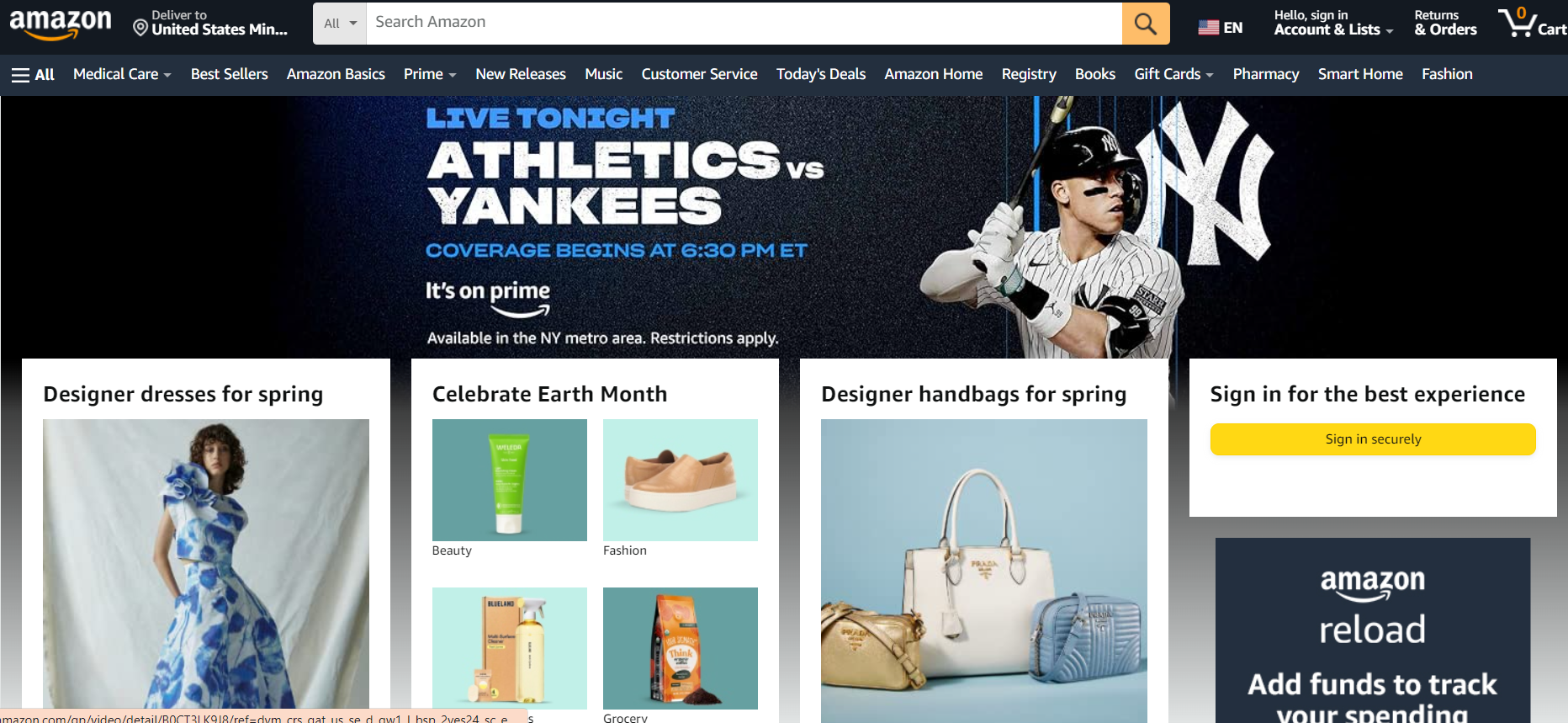
Amazon began as an online bookstore and rapidly evolved into a titan of e-commerce, embodying the B2C model with a vast array of consumer goods and digital products.
Amazon’s expansive logistics network, featuring extensive warehouses and advanced shipping capabilities, ensures swift delivery—a cornerstone of its brand promise.
Moreover, with the Amazon Prime subscription, it offers benefits like free shipping and streaming media. In fact, this presents a blend of B2C and D2C strategies, fostering unparalleled customer loyalty.
Amazon’s commitment to broad selection, competitive pricing, and exceptional service continues to drive its phenomenal growth.

Walmart
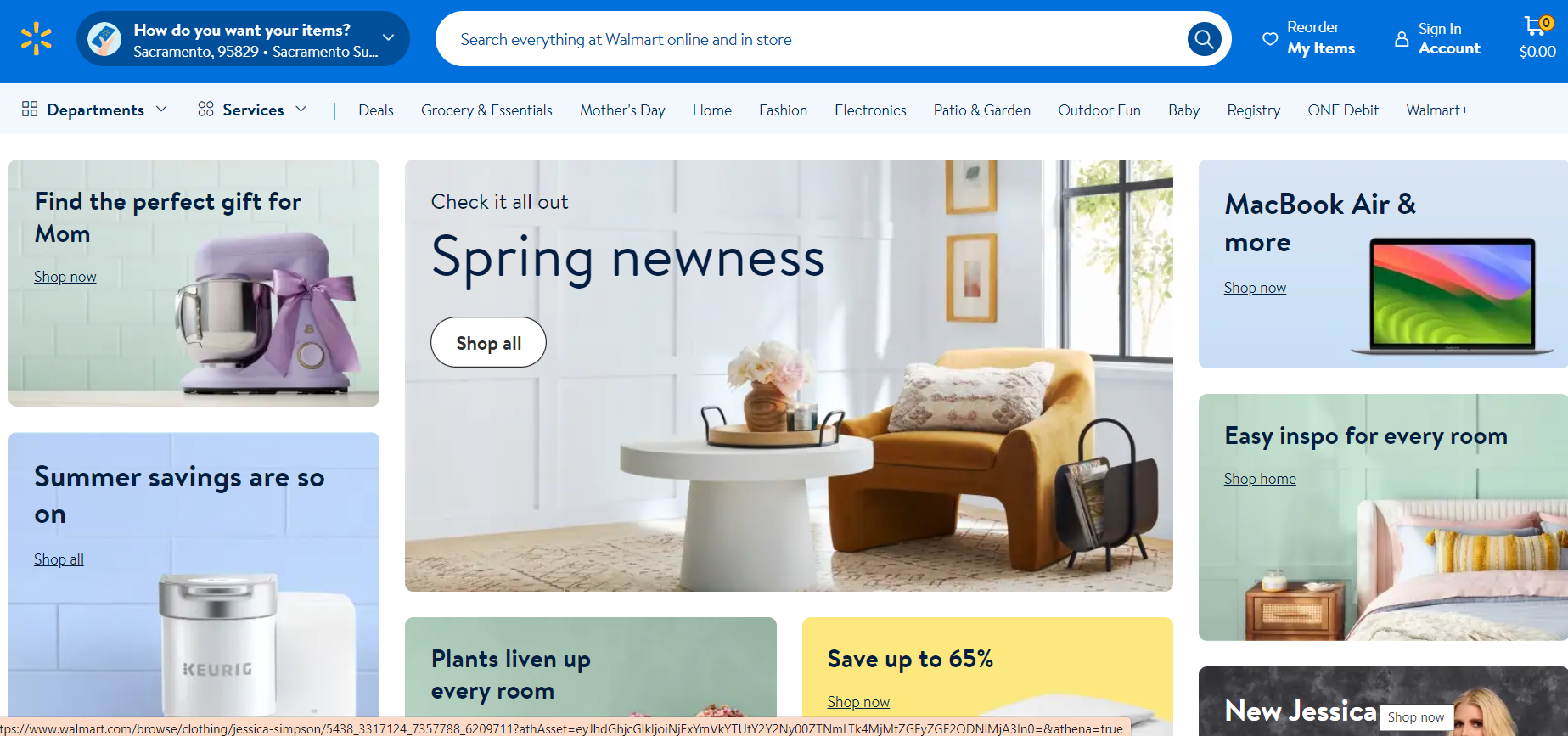
Walmart, the giant in retail, operates a global chain of hypermarkets and grocery stores, distinguishing itself with a strategy focused on low prices and wide accessibility.
While traditional B2C models like Walmart use vast physical infrastructures, their increasing investment in online platforms also taps into D2C strategies, aiming to provide convenience and competitive pricing.
Walmart’s success hinges on its operational efficiencies and effective supply chain management, allowing it to deliver value and affordability across its consumer base.
Real-Life Examples Of D2C
Glossier
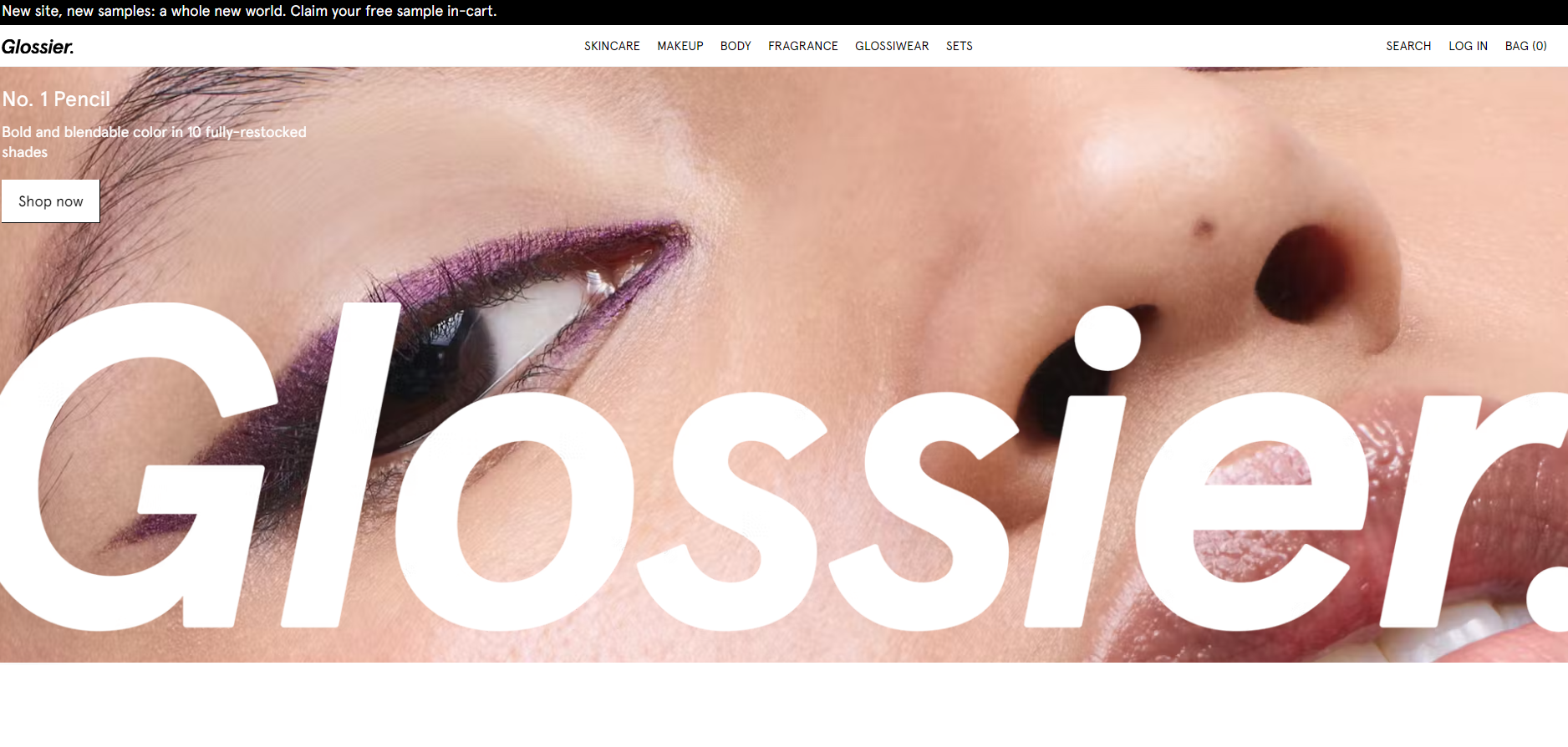
Glossier’s journey into the world of direct-to-consumer (DTC) marketing provides a fascinating example of the B2C vs D2C debate in the beauty industry.
This brand has managed to captivate a vast audience with a dedicated and passionate following. It is a feat that many traditional brands have found challenging.
What makes Glossier stand out might just be its relentless effort to attract new customers.
The story of Glossier began with a simple blog that helped young people find high-quality beauty products.
Emily Weiss, the founder, was not content with the products available on the market. Seeing a gap, she chose to create her own products and introduced them to her blog readers.
Now, Glossier has evolved into a direct-to-consumer cosmetics brand, selling skincare, makeup, fragrances, and more.
While they mainly sell online through their website, you can occasionally find their products in pop-up shops and other temporary retail locations.
Their success in DTC marketing stems from their ability to engage with customers through appealing content and authentic conversations, rapidly gaining traction on social media.
Glossier didn’t just sell products; they invited their customers to be a part of the product development process.
They also made significant use of influencer marketing, which allowed them to cut costs and offer products at more affordable prices compared to their competitors.
This strategy helped Glossier build personal connections with its consumers, encouraging them to spread the word about their positive experiences.
On top of that, a strong content marketing strategy helped them to nurture a community of enthusiastic supporters.
Zara
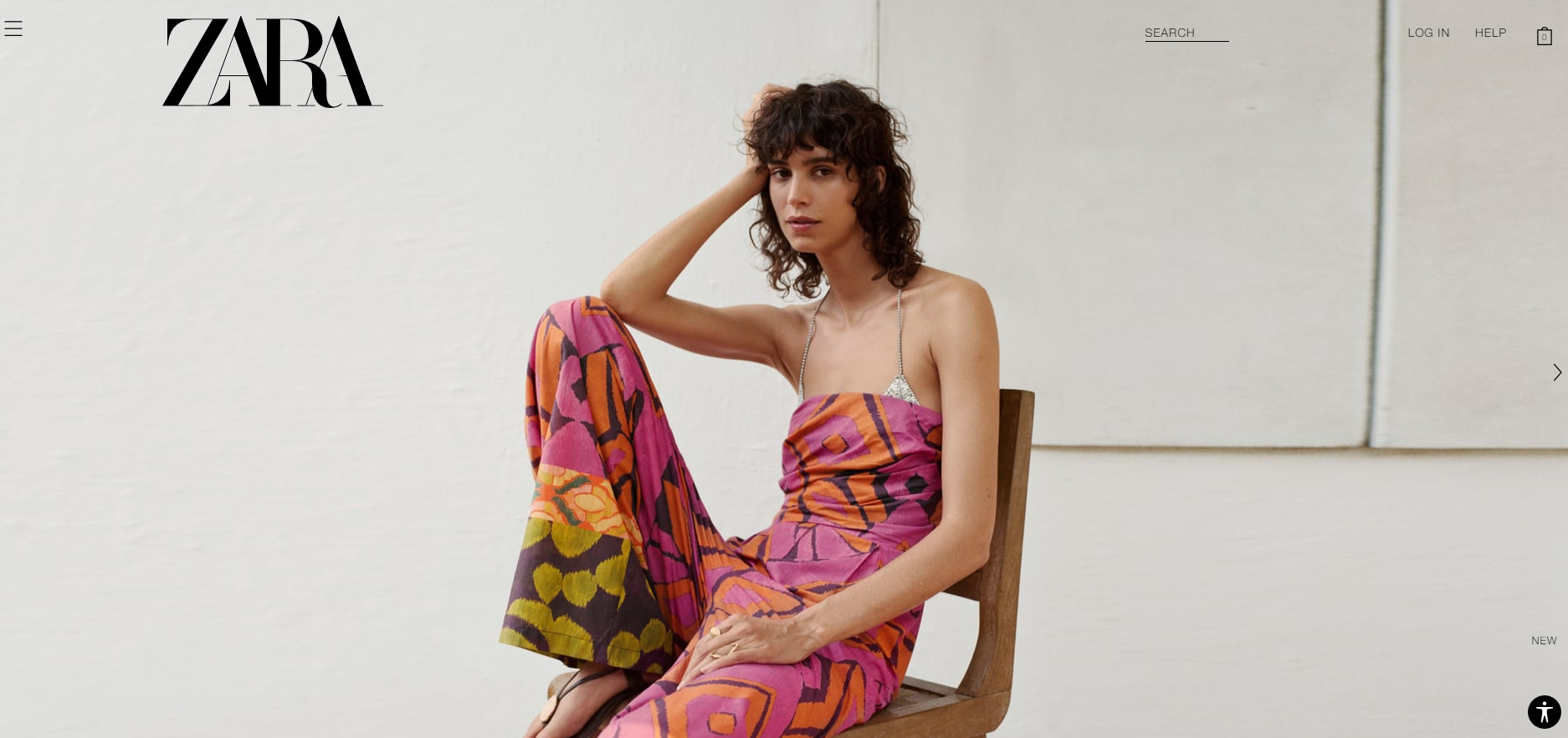
Zara, a fashion brand, has become a powerhouse in the direct-to-consumer (DTC) world, making it a prime example in the B2C vs D2C discussion.
This brand is renowned for delivering high-quality, affordable clothing for men, women, and youth, securing a beloved spot among global fashion fans. Remarkably, Zara has built an impressive following on Facebook, nearing an incredible 30 million likes!
Zara’s success story is closely linked to its parent company, Inditex, which is a major player in the global retail market with 8 brands and nearly 7,500 stores.
What truly distinguishes Zara is its steadfast commitment to the D2C model and its strategy of vertical integration. This approach has placed Zara at the forefront of the fast fashion industry.
It enables them to rapidly introduce new designs to the market, sometimes in just two weeks.
Through its D2C marketing strategy, Zara has not only showcased the immense possibilities for DTC fashion brands but also set a precedent for the future of the industry.
This strategy has firmly established Zara as a source of inspiration and a leader in direct-to-consumer fashion, much admired by both consumers and industry experts.
Additionally, Zara keeps its finger on the pulse of current trends, continually offering accessible style and influencing the fashion landscape.
This ongoing commitment has made Zara a guiding light for those exploring the dynamic world of direct-to-consumer fashion.
So, let Zara inspire you as you delve into the exciting possibilities of the DTC fashion scene.
Tesla
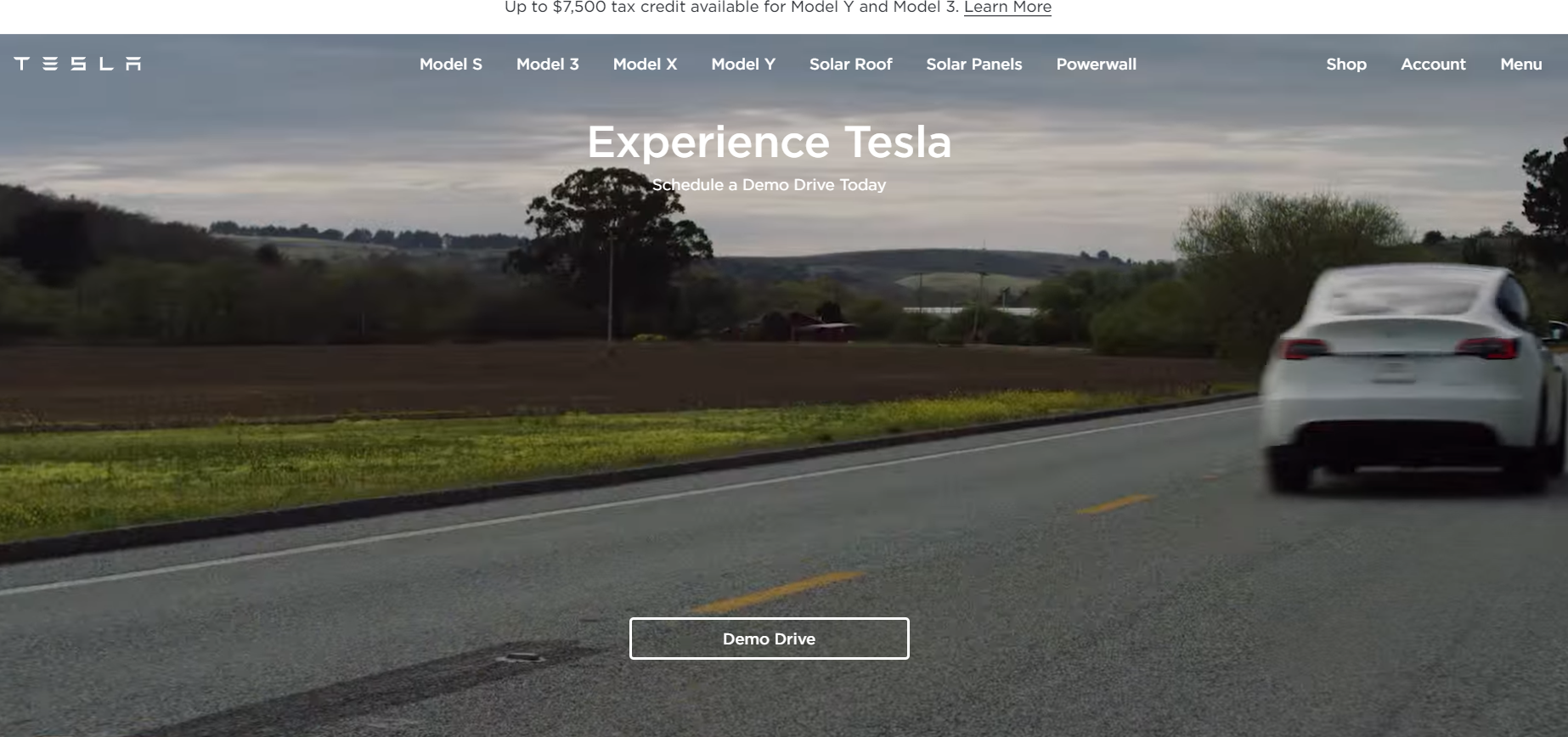
Does Tesla really need an introduction? Probably not! It’s well-known as a company that has completely transformed the automotive industry by challenging the traditional middleman setup.
Tesla has carved its own route, developing a unique supply chain to achieve its goals and, most importantly, building direct relationships with its customers.
In their direct-to-consumer (D2C) marketing strategy, Tesla has shown relentless determination to shake up the standard auto industry model. They’ve dramatically cut costs by reducing or eliminating middlemen, making sure their customers get affordable, high-quality electric vehicles.
Furthermore, Tesla stands out in delivering exceptional value to its customers. They are known for their outstanding product quality and competitive prices.
Although they started out as a luxury brand, the profits from their high-end vehicles have been reinvested to expand their range, producing more affordable electric vehicles for a broader audience.
Tesla’s dedication to innovation, focus on the customer, and sustainability has truly set them apart, marking them as pioneers in the B2C vs D2C evolution within the automotive sector.
Dollar Shave Club
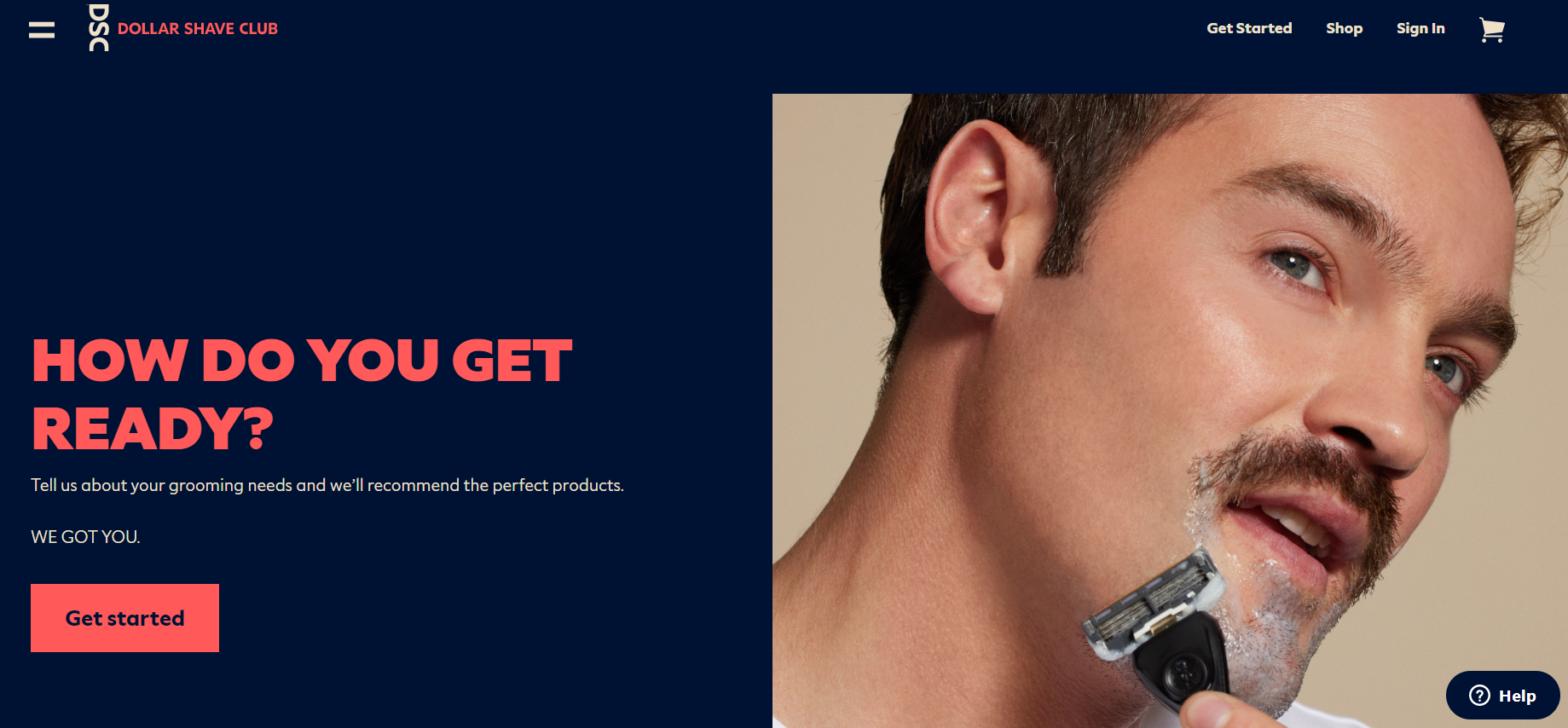
Dollar Shave Club is a prime example of how effective the direct-to-consumer (D2C) model can be, especially in the B2C vs D2C landscape.
The CEO, Michael Dubin, chose to eliminate the middleman to cut costs, which led to the creation of a business valued at billions of dollars. This approach has proven to be more efficient than traditional retail shopping.
Instead of the hassle of remembering to buy new razor blades at the store every time they run out, customers can simply subscribe to Dollar Shave Club and pick a delivery schedule that fits their needs.
This method completely skips the traditional retail route, offering a more convenient and often cheaper solution.
Customers who get to know this system soon realize they are paying extra for a less convenient service when shopping through traditional retailers.
By embracing direct-to-consumer marketing, Dollar Shave Club not only grew into a billion-dollar enterprise but also stood out through its engaging storytelling and distinctive offerings.
Conclusion
Understanding the differences between the B2C vs D2C models is crucial for anyone venturing into the world of commerce.
The B2C approach offers wider market reach and established trust through well-known platforms, making it appealing for those looking to leverage existing distribution networks.
On the other hand, the D2C model emphasizes personalized customer experiences and direct control over the brand narrative, allowing for greater flexibility and customer loyalty, albeit at the cost of facing intense competition from the outset.
So, in my opinion, as a beginner, your choice between B2C vs D2C largely depends on the nature of the product and the desired interaction with customers.
While B2C provides a quick entry into the market with potentially lower upfront costs due to established channels, D2C offers a unique opportunity for brand differentiation and a closer relationship with consumers.
However, given the complexities and higher initial demands of the D2C model, B2C might be a safer and more accessible option for beginners looking to learn the ropes before diving into more complex business strategies.
This choice allows you to tap into the vast networks of consumers without the immediate pressures of managing every aspect of the supply chain and customer service that a D2C approach demands.















![The Top 21 3PL Companies Compared [2025 List & Guide]](https://images.weserv.nl/?url=https://prod-dropshipping-s3.s3.fr-par.scw.cloud/2024/03/Frame-3922469.jpg&w=420&q=90&output=webp)